Home > Product Installs & Reviews > Product Reviews > Car Speaker Reviews > Sony Mobile ES Car Speakers: First Look Review
In this article: We'll review Sony's new lineup of high-end automotive speakers – the Mobile ES line – and give you a first hand look at the speakers as we unbox them. We'll document our first thoughts along with all the key features of the lineup of speakers.
In May of this year, Sony released a new lineup of speakers. Mobile ES is what they named it and they're designed for the audiophile. They're certainly marketed for the audiophile too, their new website looks fantastic!
Earlier this month, we did an overview article that covered the release of the products with some high level information about the new lineup and some of its key features, but at the time we didn't have any products to look at or write about first hand. At the time of writing this article, the products aren't even available for purchase, but we've received an entire lineup of the Mobile ES products from Sony to take a look at. In this article, I'll run through all of the key features of the new Mobile ES lineup of speakers, what I think about them along with the unboxing process. I'll share a ton of photos too.
It's worth noting up front that in our First Look reviews, we typically do not hook any of the products up to power, or in this case test the sound of the speakers. This is a first look at the products and all of its features in depth before we install them in a vehicle. Check back at a later time for an installation vehicle and more information about how we liked the system.
Recent Reviews & Articles
The Mobile ES Lineup
Let's start out by introducing the new lineup a little more. The Mobile ES line of speakers includes a total of 5 different speakers – 3 coaxial speakers, 1 component speaker and 1 subwoofer. I think their goal was to cover all of the most frequently upgraded speaker sizes in the widest variety of cars. And this combination of speaker sizes does that. Here's the lineup:
- XS-162ES: 6.5″ 2-way component speakers with a separate 1″ synthetic fiber dome tweeter.
- XS-160ES: 6.5″ 2-way coaxial speakers
- XS-690ES: 6×9″ 2-way coaxial speakers
- XS-680ES: 6×8″ 2-way coaxial speakers
- XS-W104ES: 10″ subwoofer
Between 6.5″ coaxials and components, and 6×9″/6×8″ coaxials you can be pretty confident that at least one combination of these speakers will fit in whatever car you have. If you're unsure, you can check out our speaker fitment guide to see what sizes your vehicle has.
From a subwoofer perspective, Sony only offers one size – a 10″. This is probably because it's the most well-rounded sub that fits the most applications. Earthshaking bass also doesn't really appear to be what Sony was going for with this lineup. Well rounded, high quality, full body vocals and detailed instrument textures is what this lineup was engineered for. That said, I'm hoping that Sony'll introduce a 12″. In my opinion, that's the most versatile sub size there is if you have the space for it. In the meantime, if you want more bass just get two of their XS-W104ES subs!
Unboxing the Mobile ES Speakers & Subwoofer
If you've read any of my other reviews, you'll know I like to cover the unboxing experience with a good amount of detail. I do this because it's apart of the purchase experience… It should be covered. Apple products have solidified how meaningful this part the purchase process is with their packaging and products. They could probably put an ordinary product in their packaging and still make you feel good about it. But the unboxing also shows how much detail a manufacturer puts into protecting their products from damaging in the shipping process which'll help prevent You from installing a speaker only to find out that it's been damaged.
As a quick preface to the images I'm going to share, these products were demo products so they may not be packaged exactly how they would be if they were retail products. Things like the outer box, manuals, etc might be different in retail products but the general packaging should remain the same. Here's a look at the opening of the XS-162ES. I'm choosing this speaker because it has the most components in the box (e.g. tweeters and crossovers).
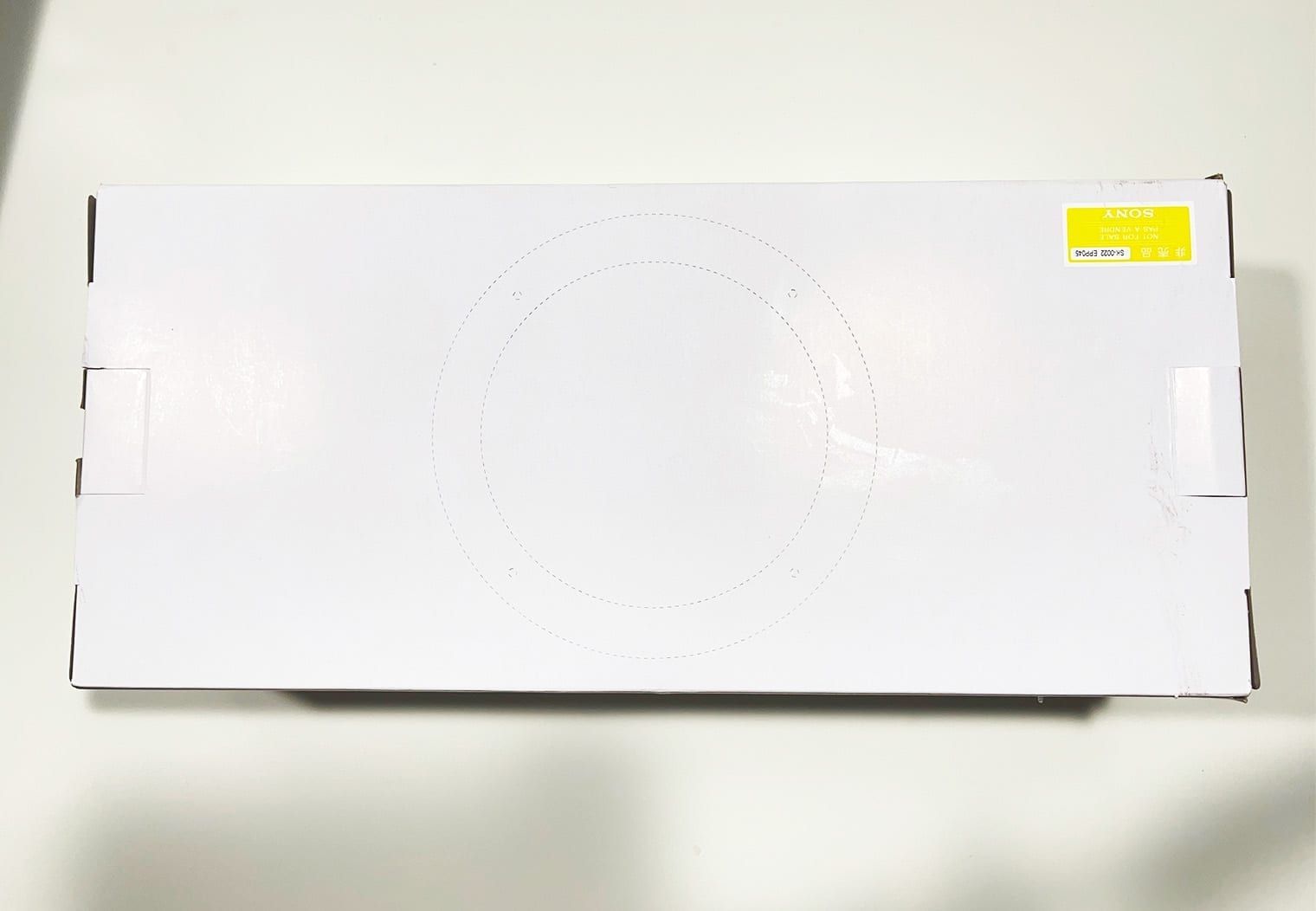
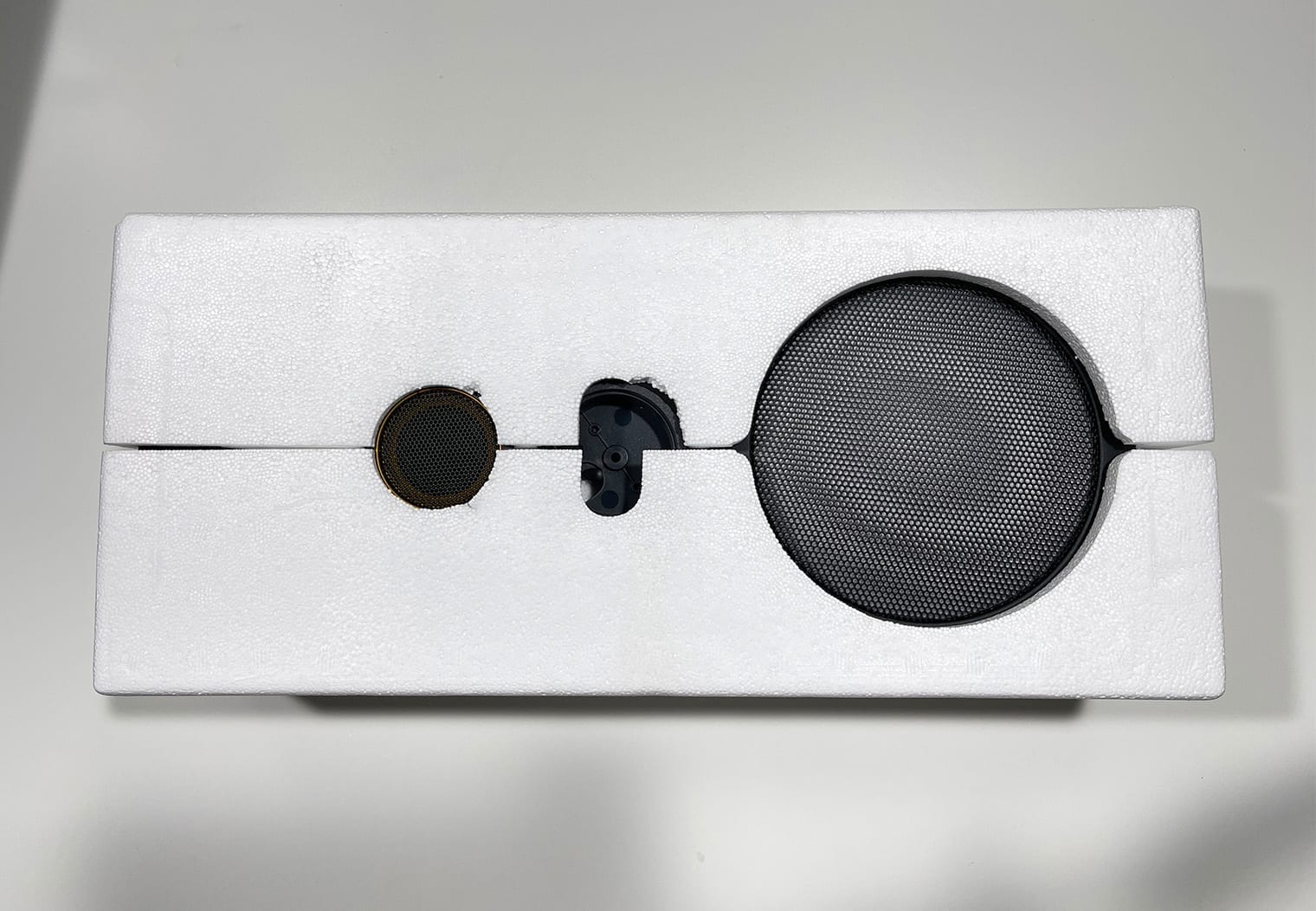
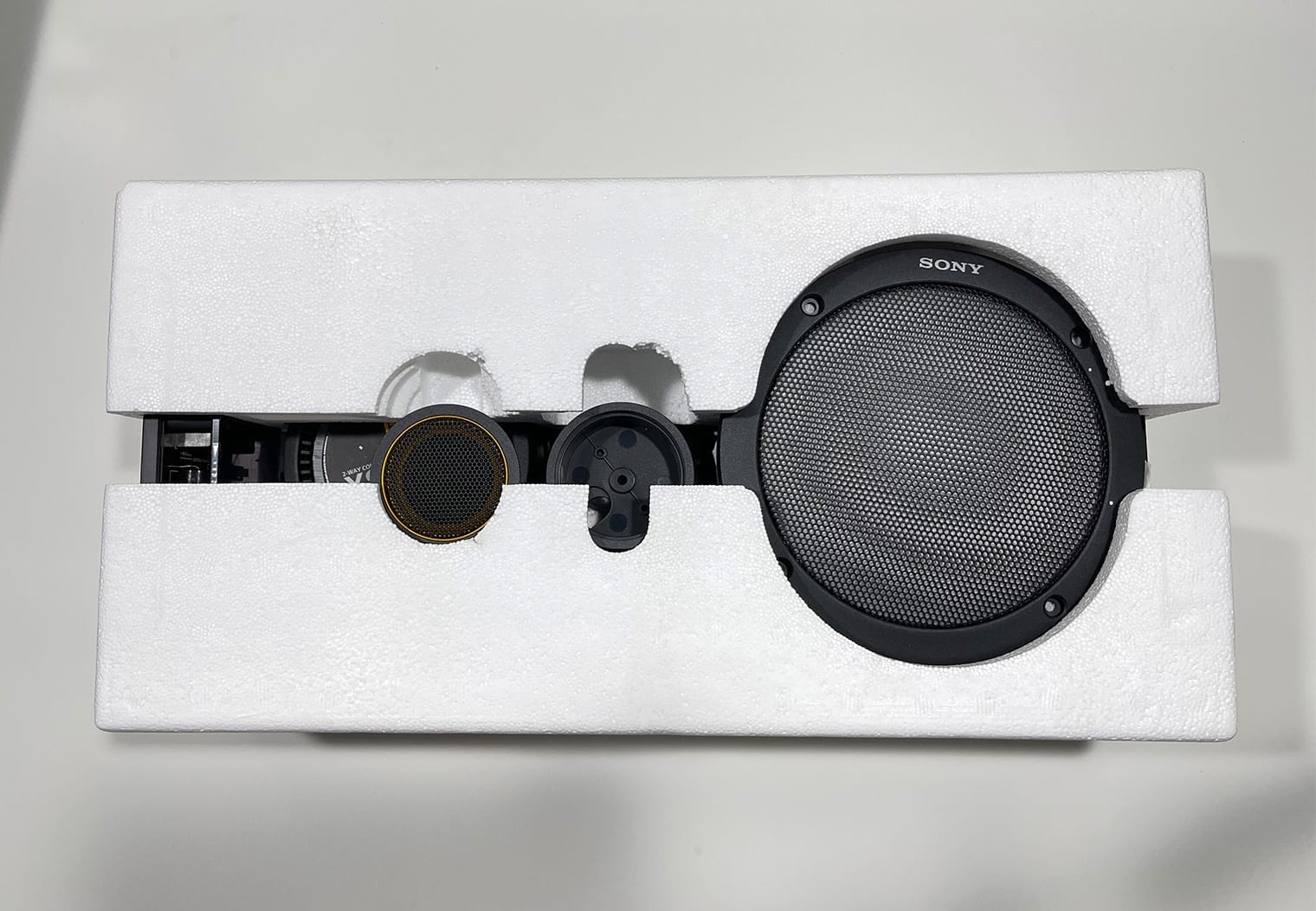
As expected, Sony's packaging is flawless. What I look for when I open up a new set of speakers is how well are all the components are secured. Cones of speakers are fragile and if a screw or grille came loose it could puncture it. Moulded packaging is ideal, which is what's in all of these speakers with the exception of the subwoofer which has cardboard. Here's a few snapshots of the sub packaging as well since it's the only one that was different.
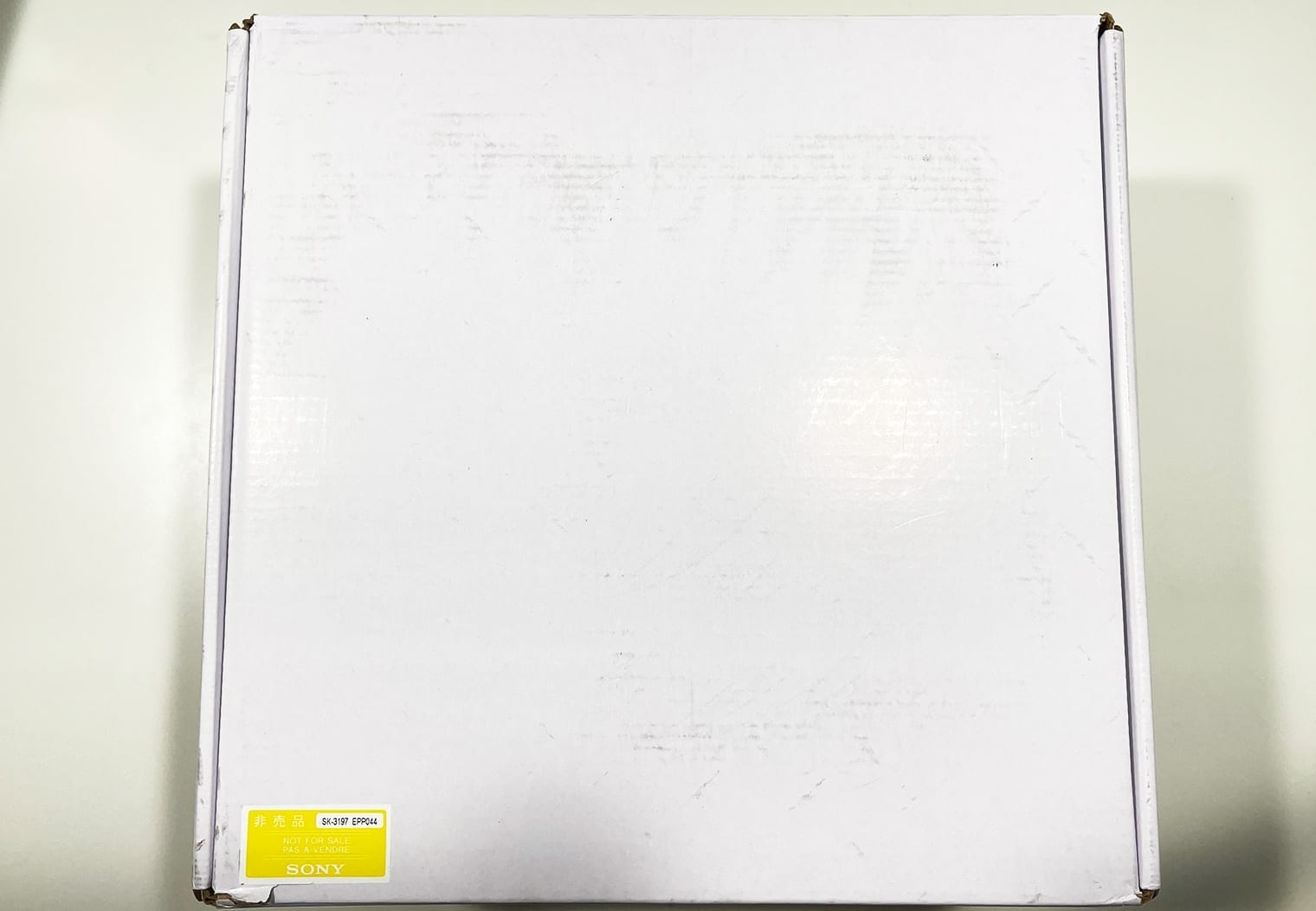
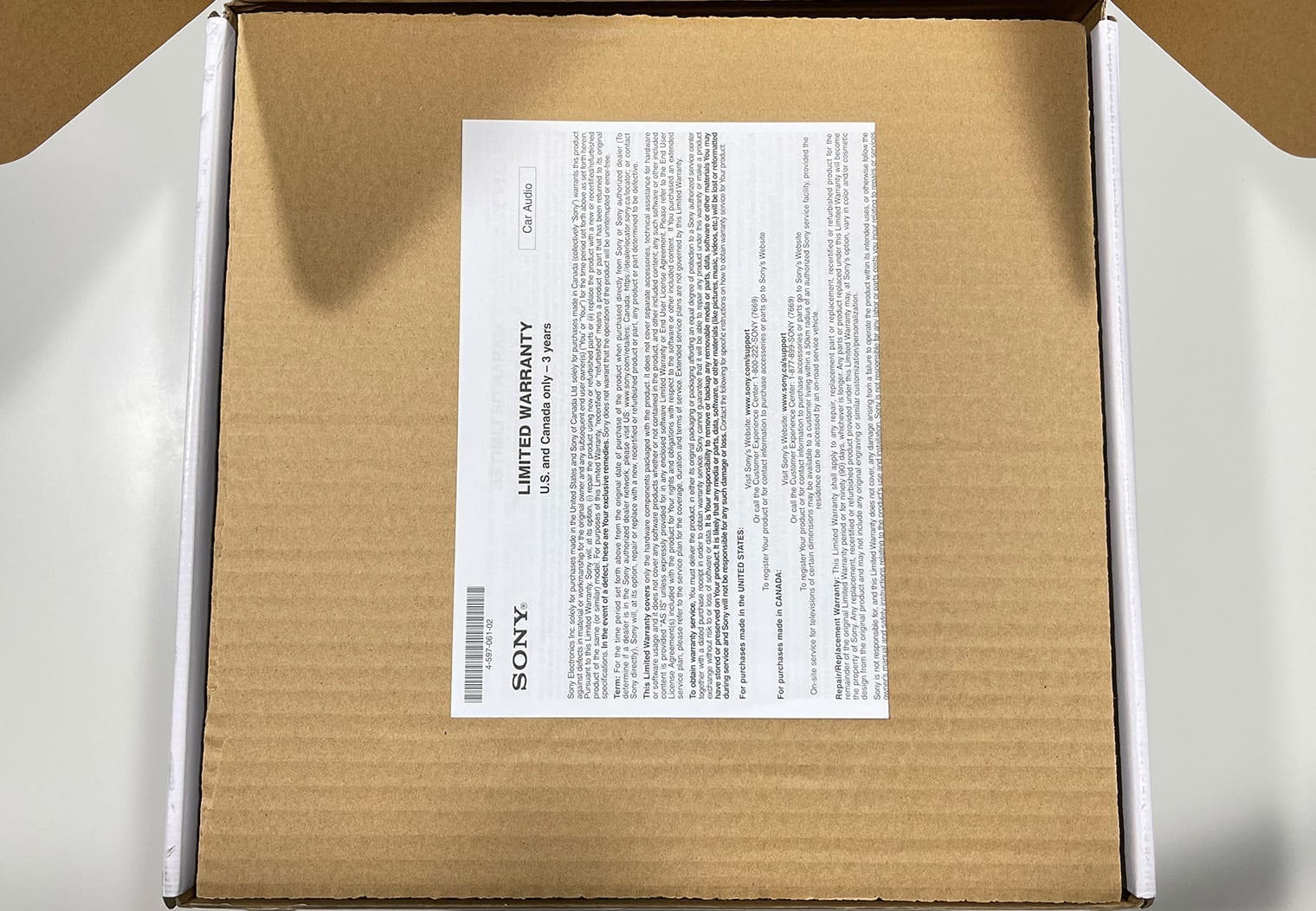
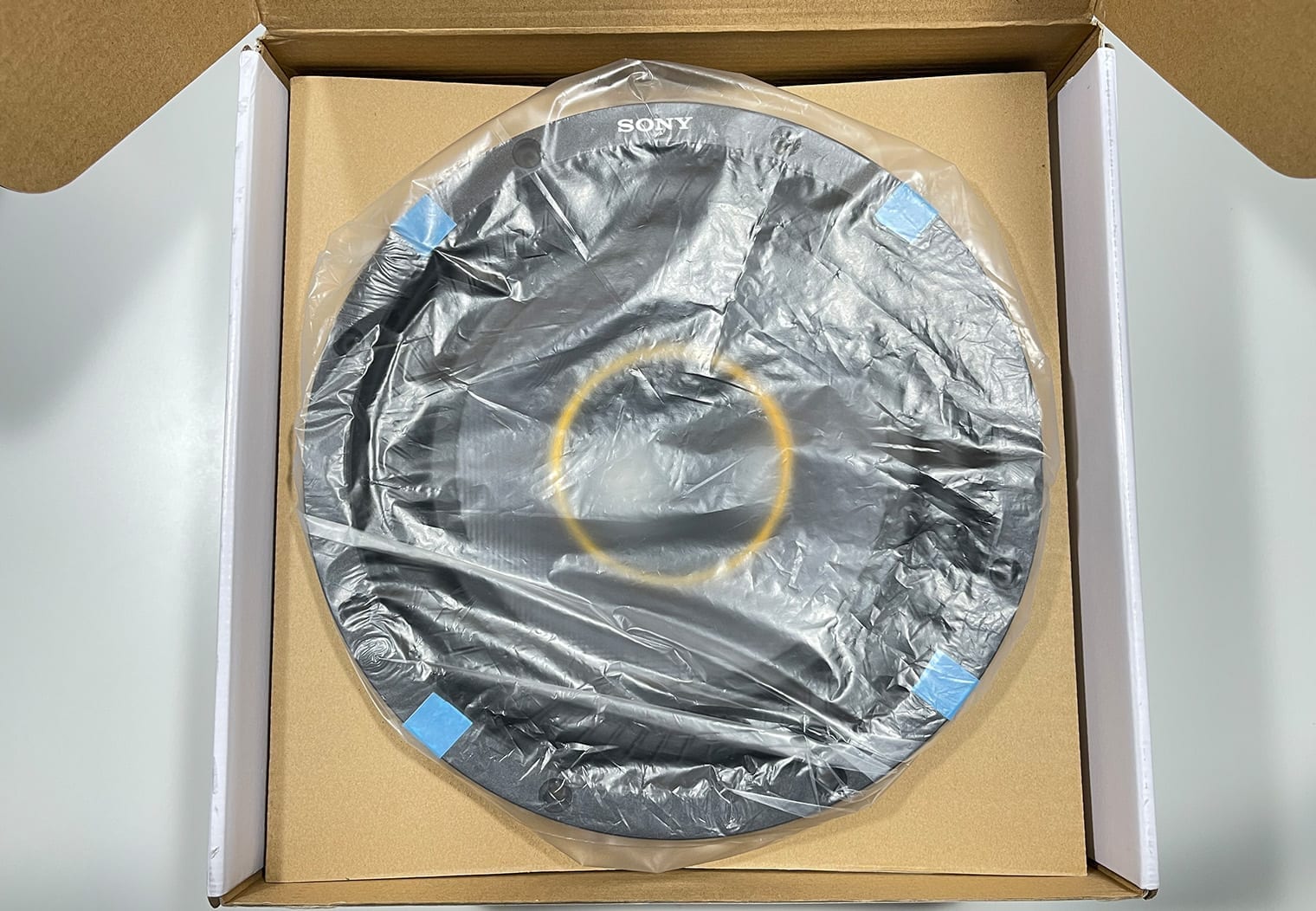
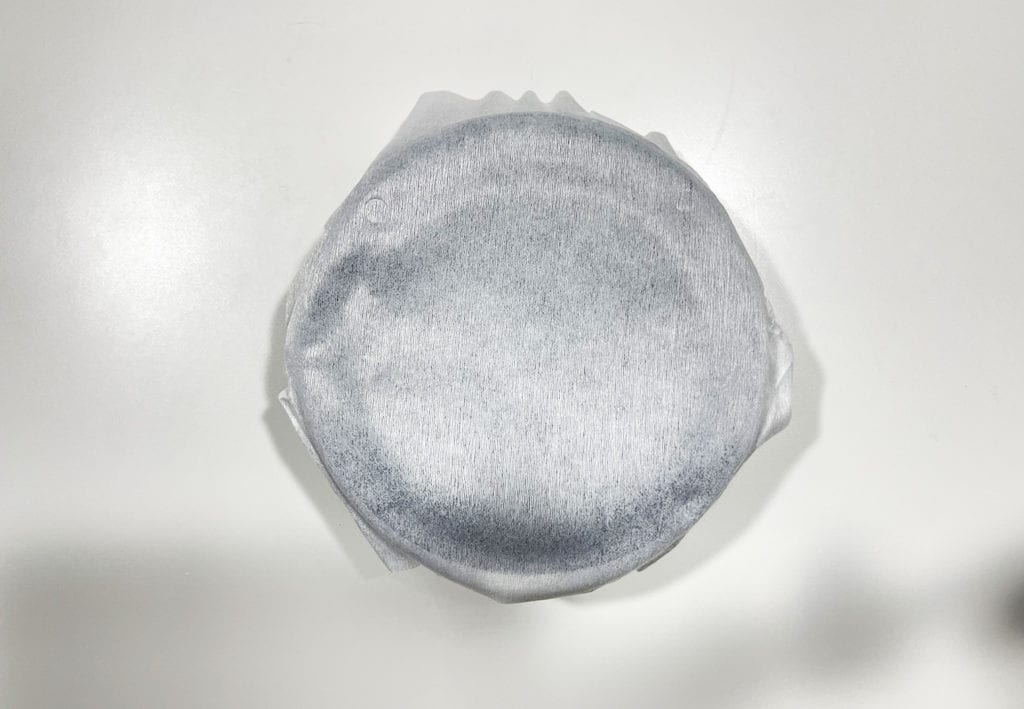
One thing I liked about opening up these speakers and sub was that they were all very well-protected with either cloth, protective film or plastic within the moulded packaging. One example is the speaker grille, which come packaged on top the speaker. But since it's not mounted it could vibrate and scratch the outer edge of the speaker. To protect the speaker from the grill, Sony added a piece of fabric in between. It's this type of detail that lets you in on the level of detail that Sony probably spent on the speakers themselves. Although, I've opened up very high-end speakers that have been packaged terribly too. But in general it's a good sign.
So what's in the boxes of these speakers? Here's a look at all of the speakers once I pulled them out of the box for the first time with all of the components that they came with. These images don't include things like manuals or mounting hardware.
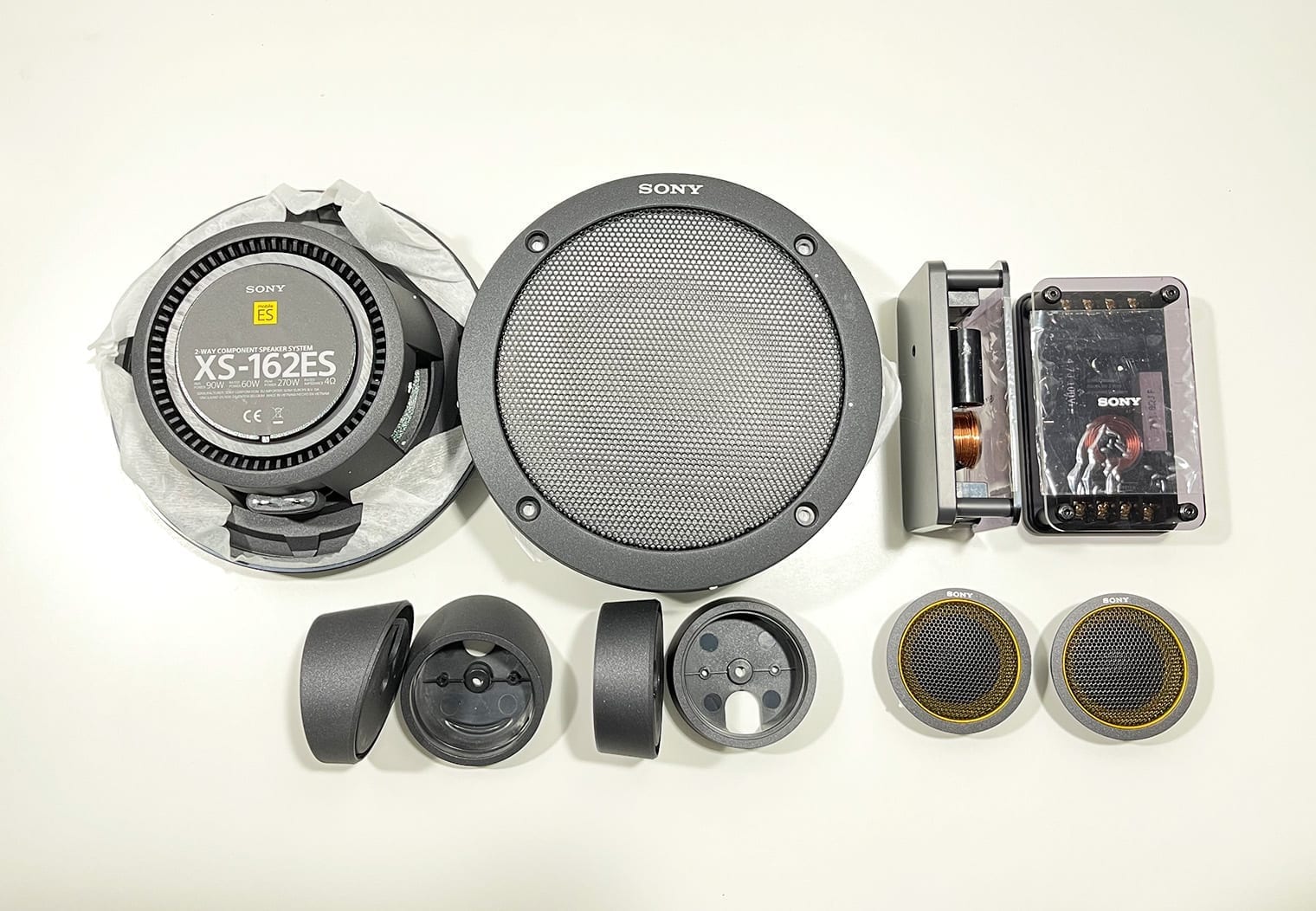
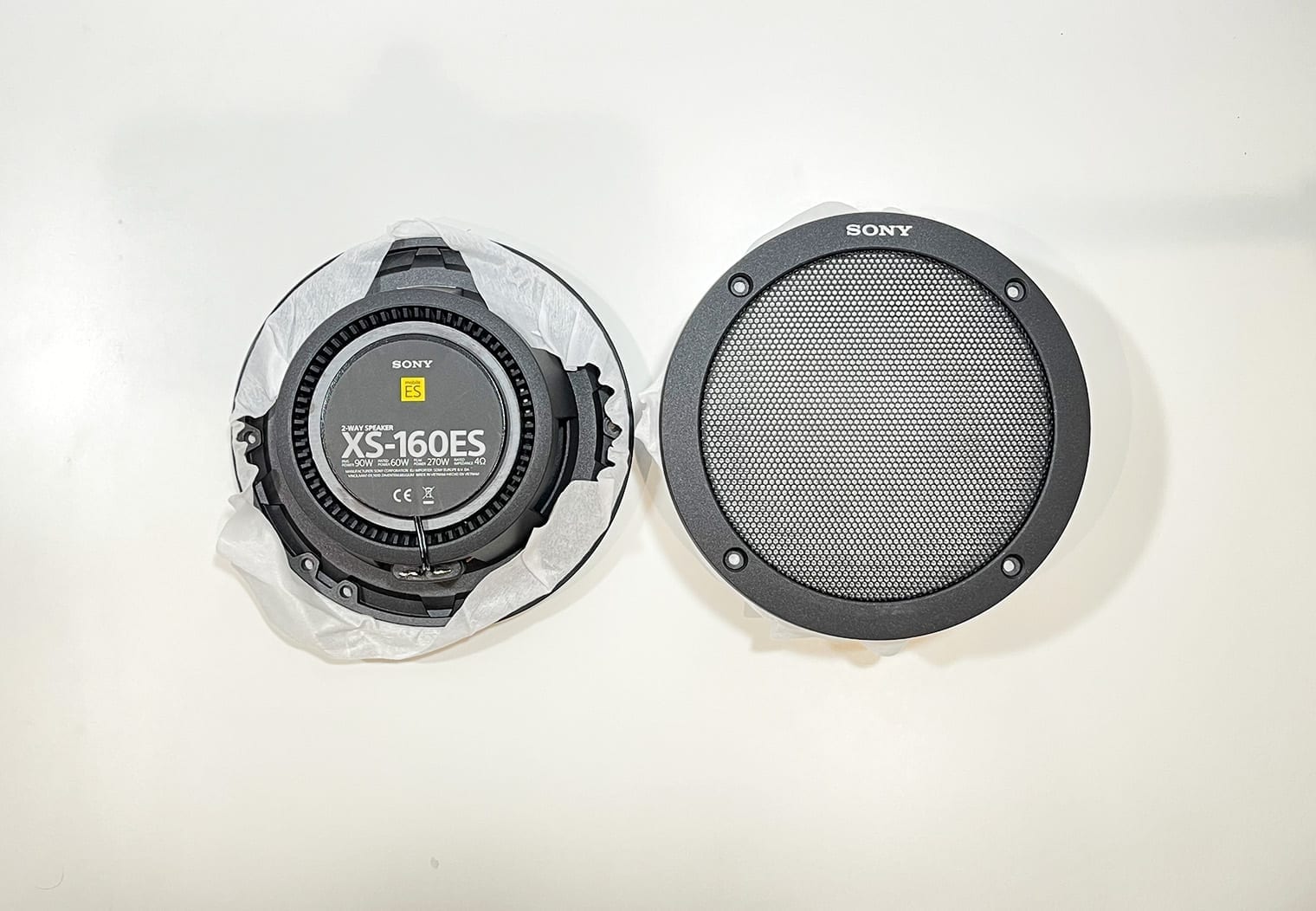
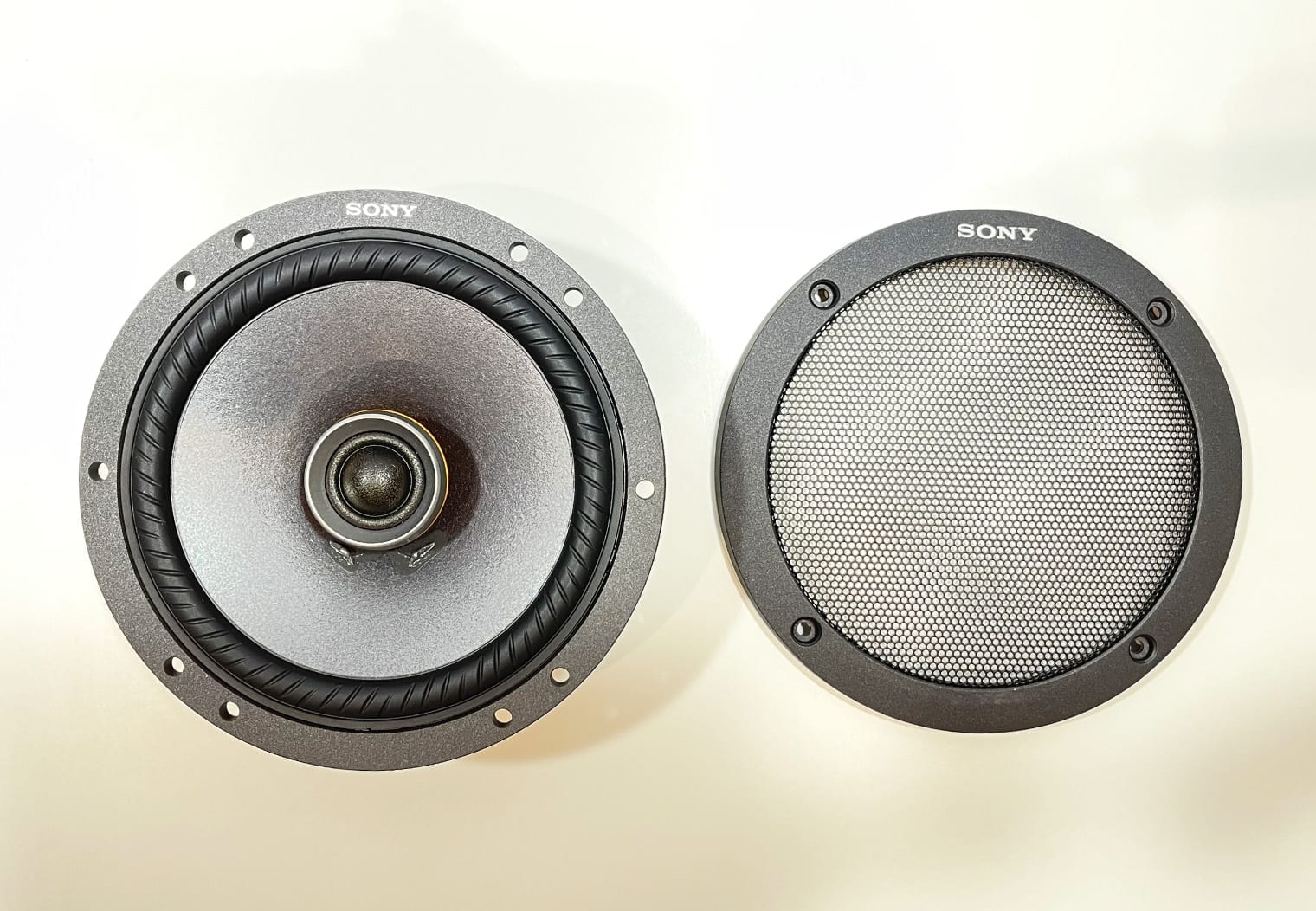
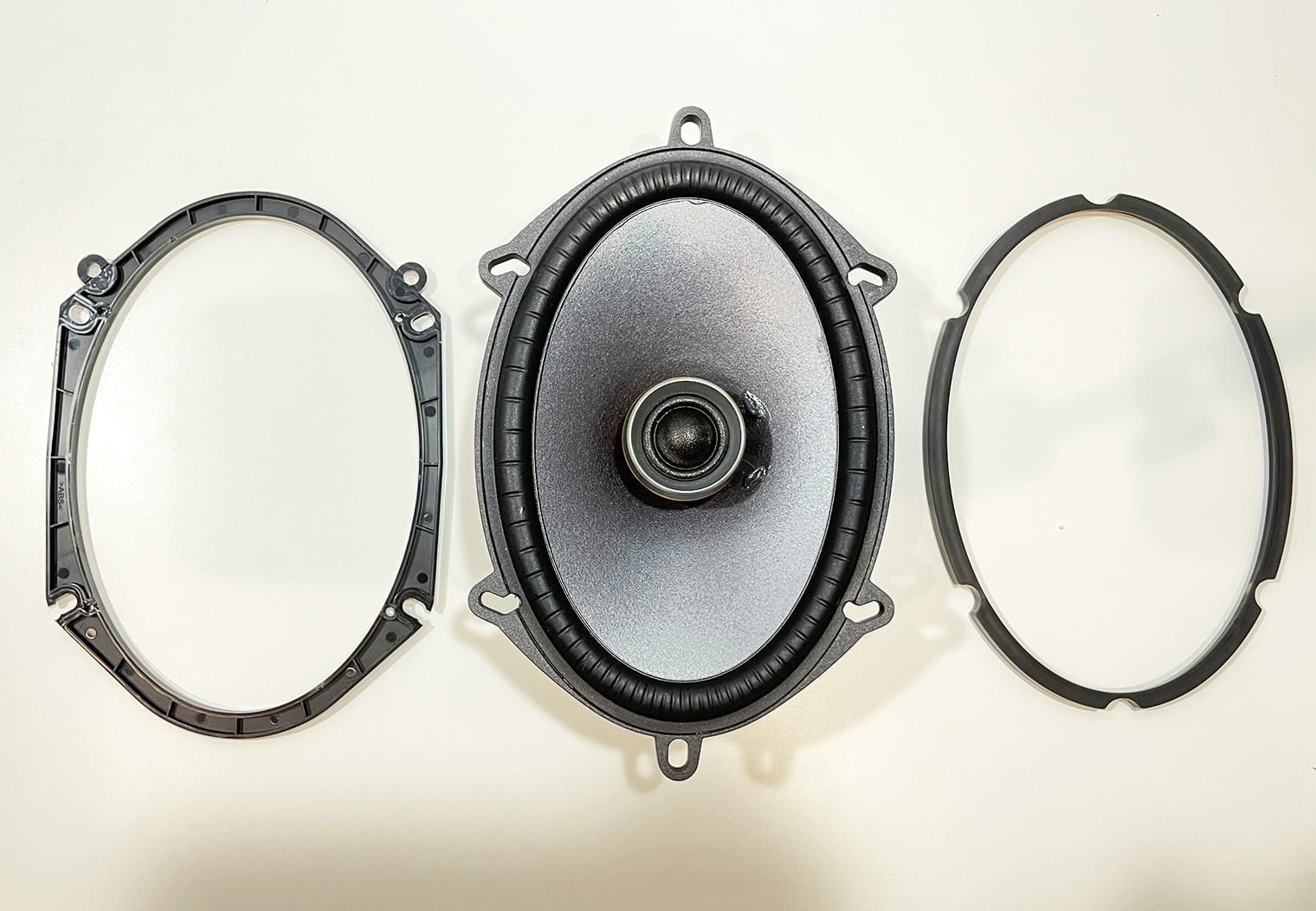
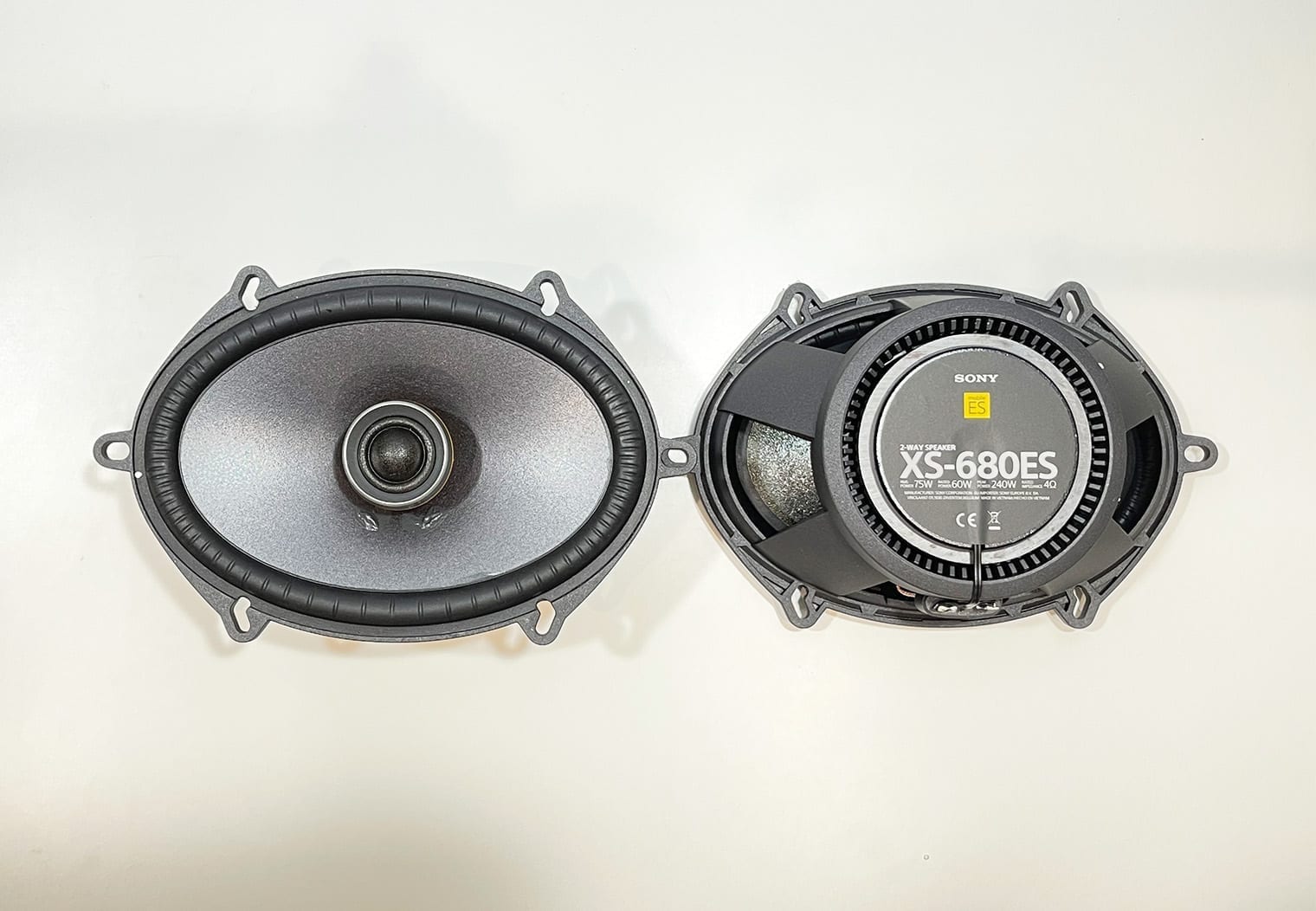
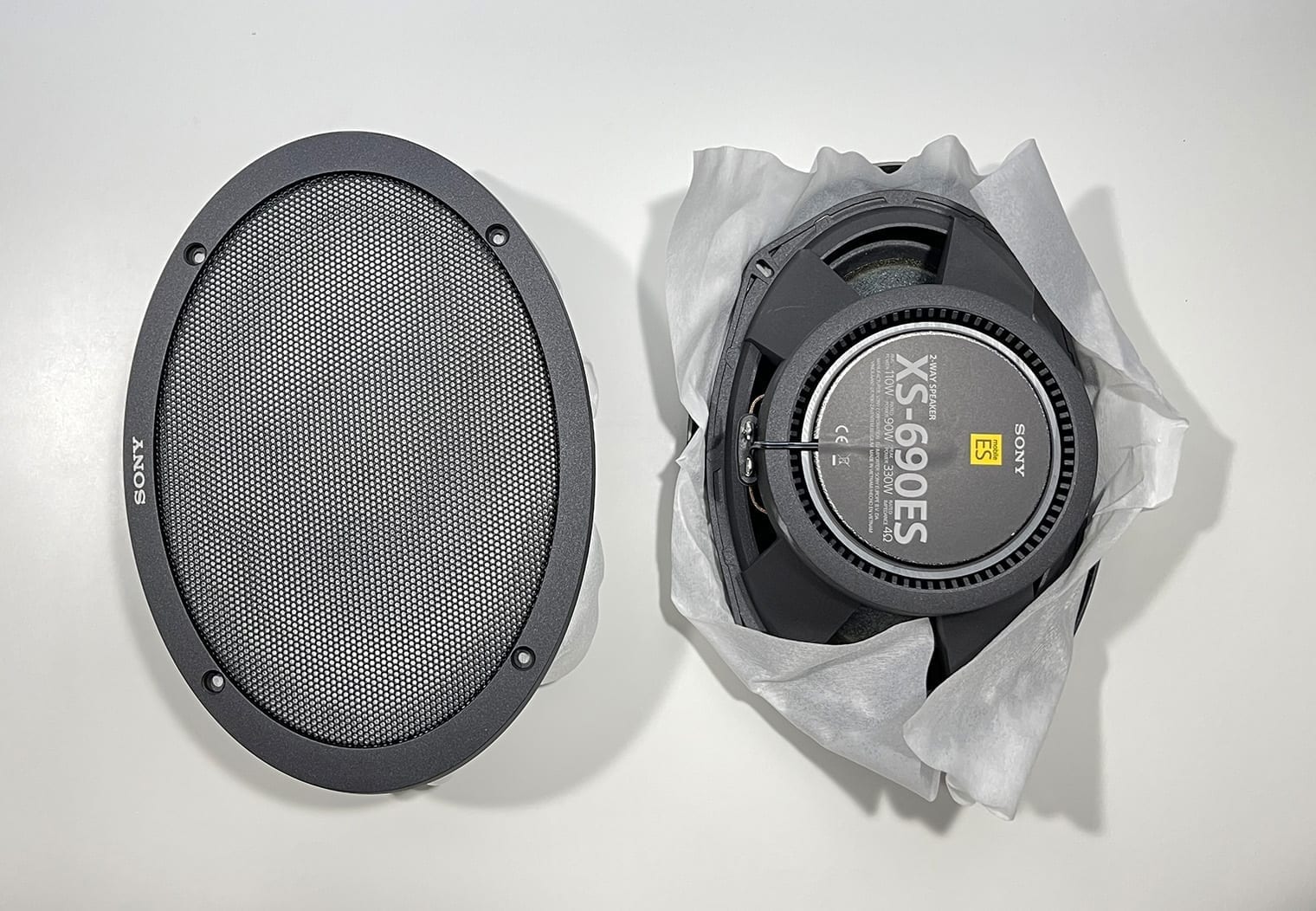
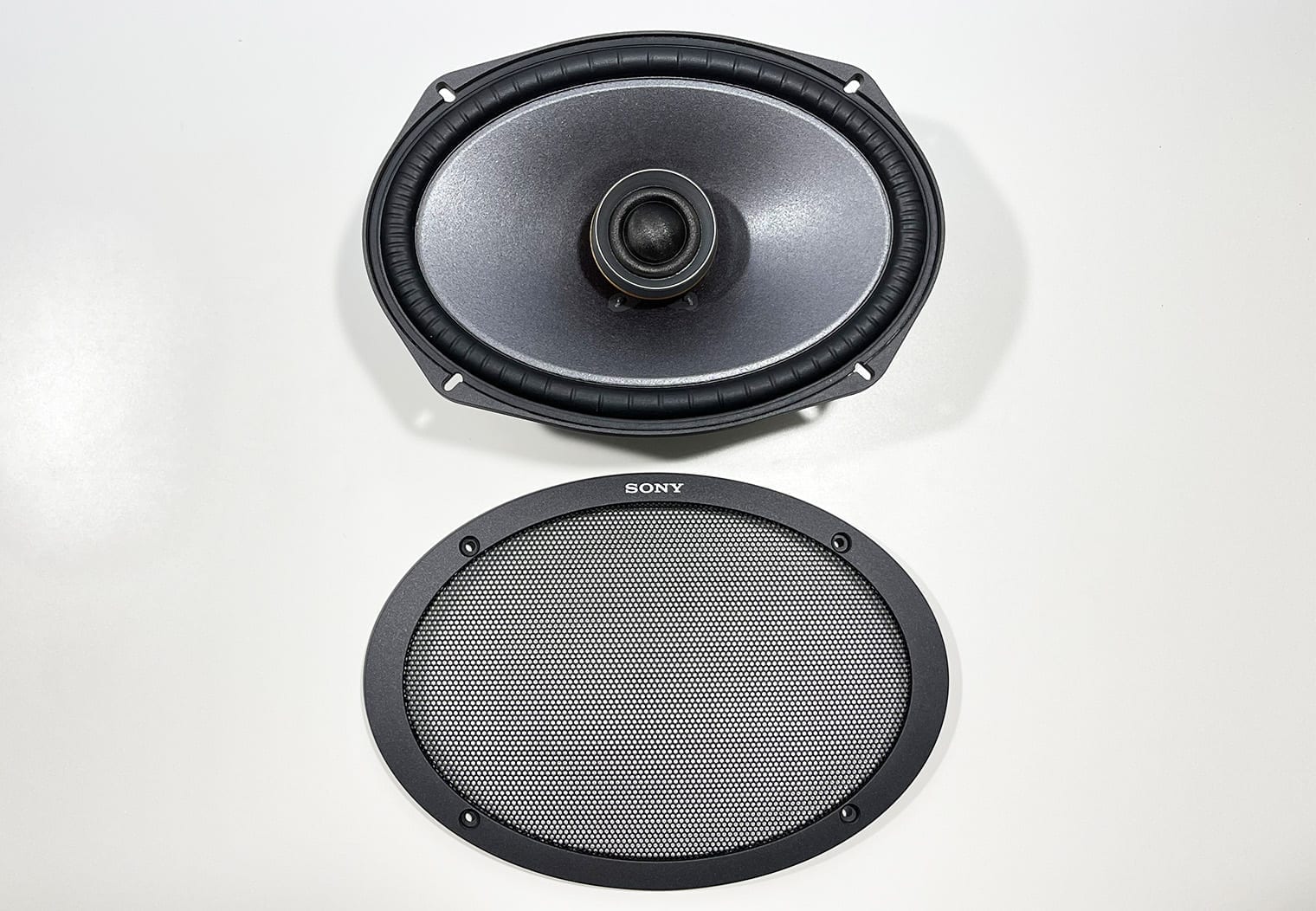
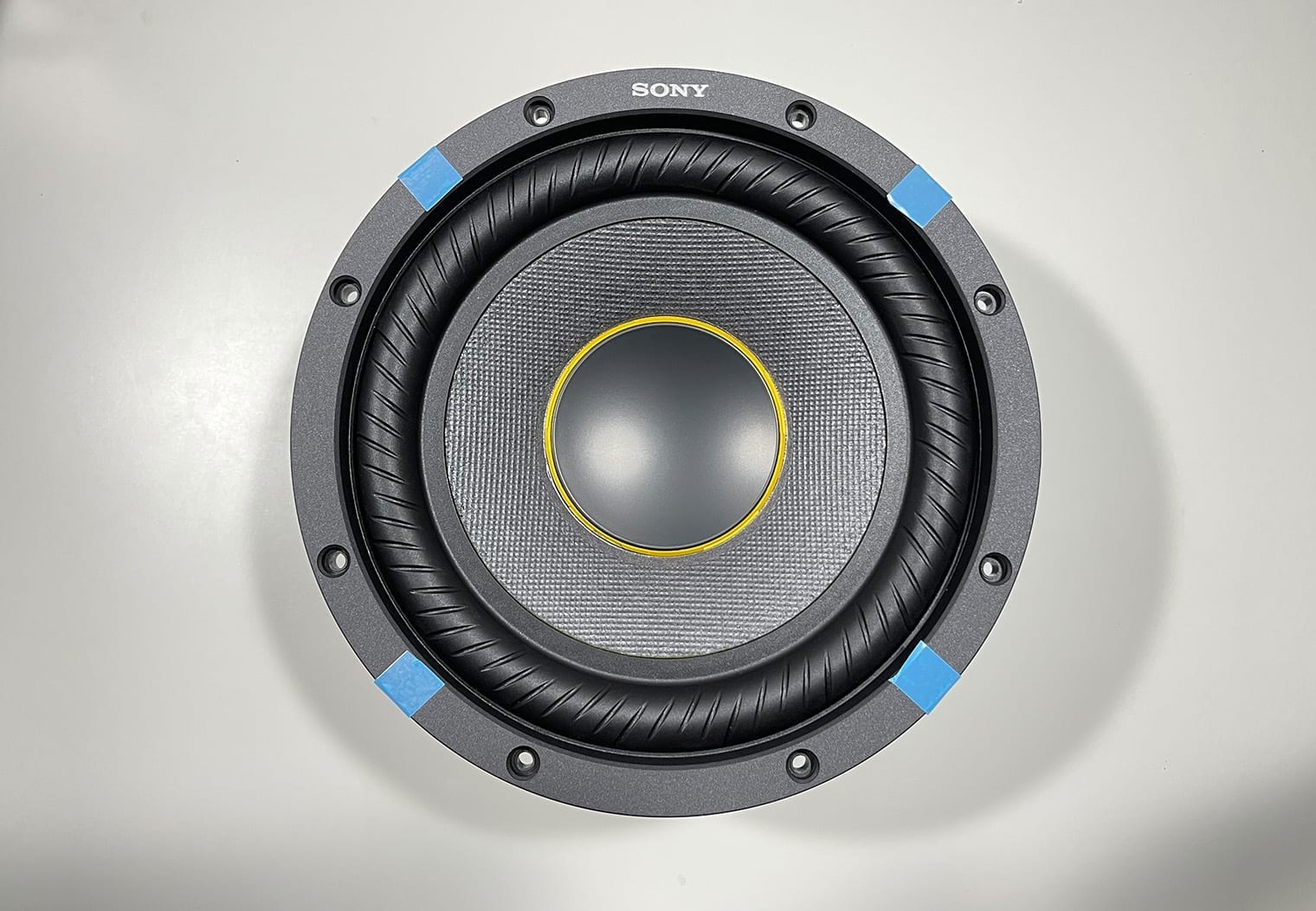
With respect to what comes in the box of these speakers, all of the coaxial speakers basically come with the speakers, grilles, mounting screws and manuals. There's a few things to call out though with the some speakers:
- The XS-680ES does not come with a traditional grille like the rest. I'm assuming this is because this size is only for door panels of newer Fords, Mazdas, Mercury, etc. No one really uses a 6×8″ speaker outside of a door panel that would need a grille.
- The XS-162ES is a component speaker, so it will come with two 1″ tweeters and crossovers separate from the speakers in the package. It'll also come with tweeter mounts that are fixed at a straight position or what looks like a 22.5 degree angle.
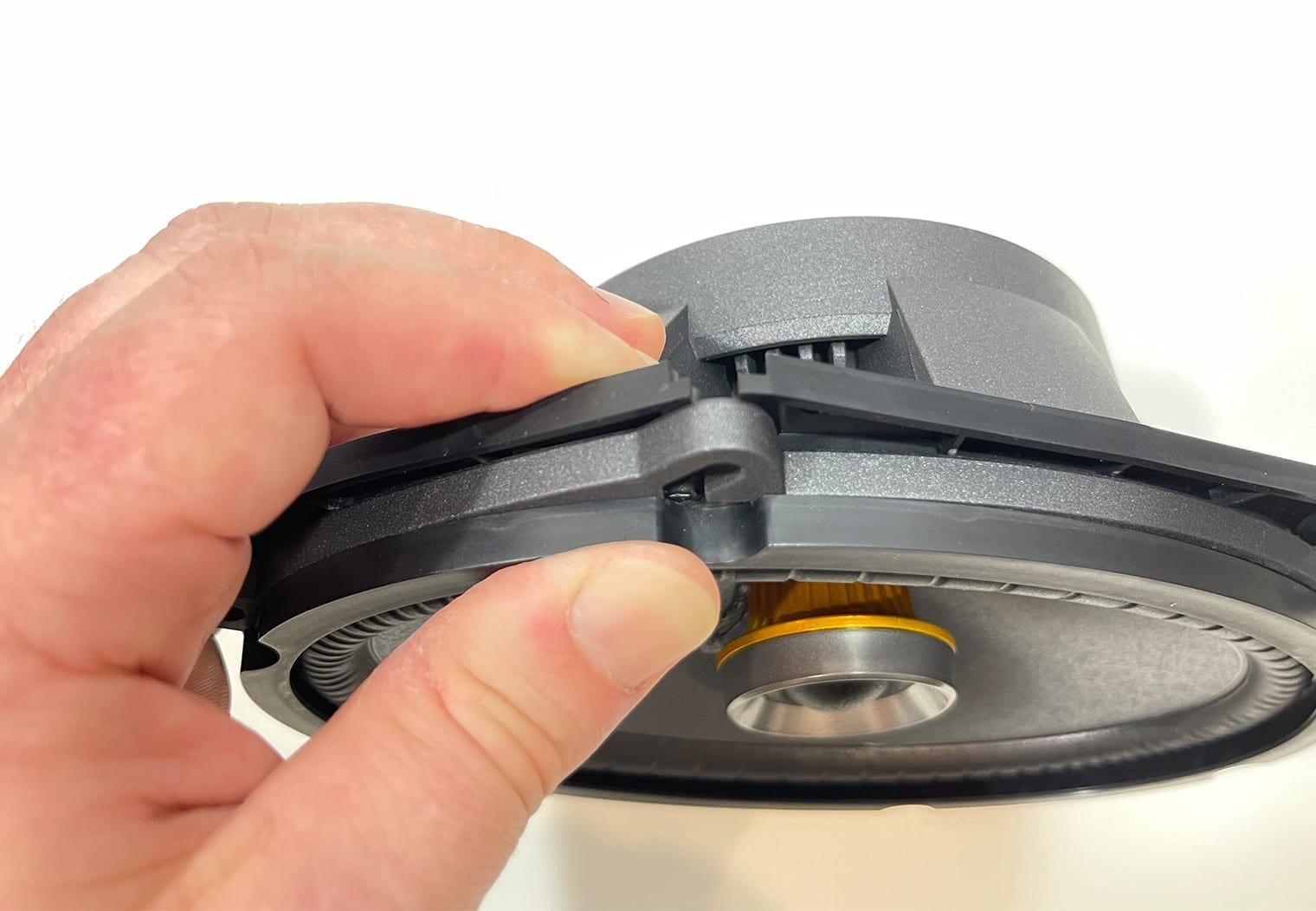
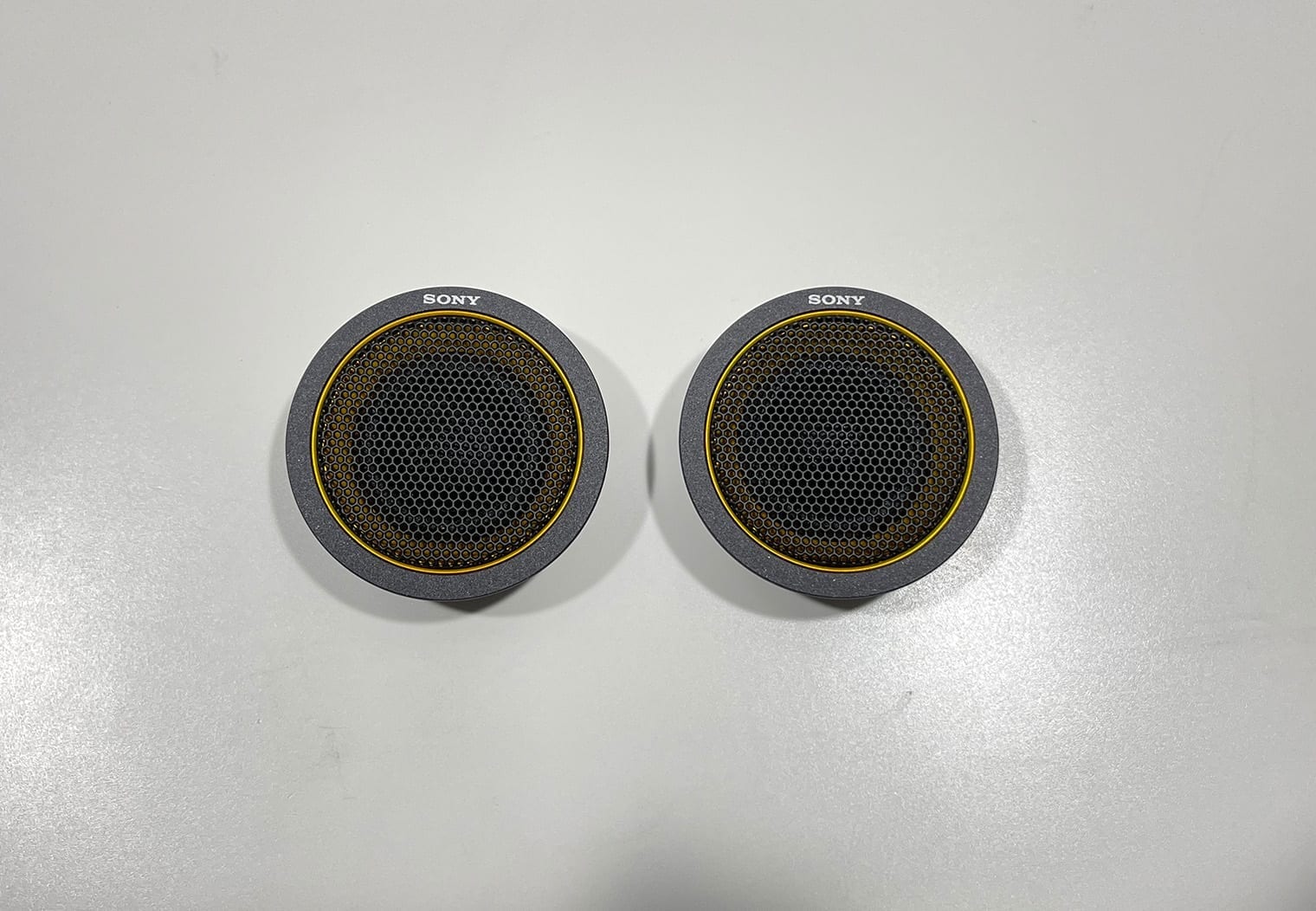
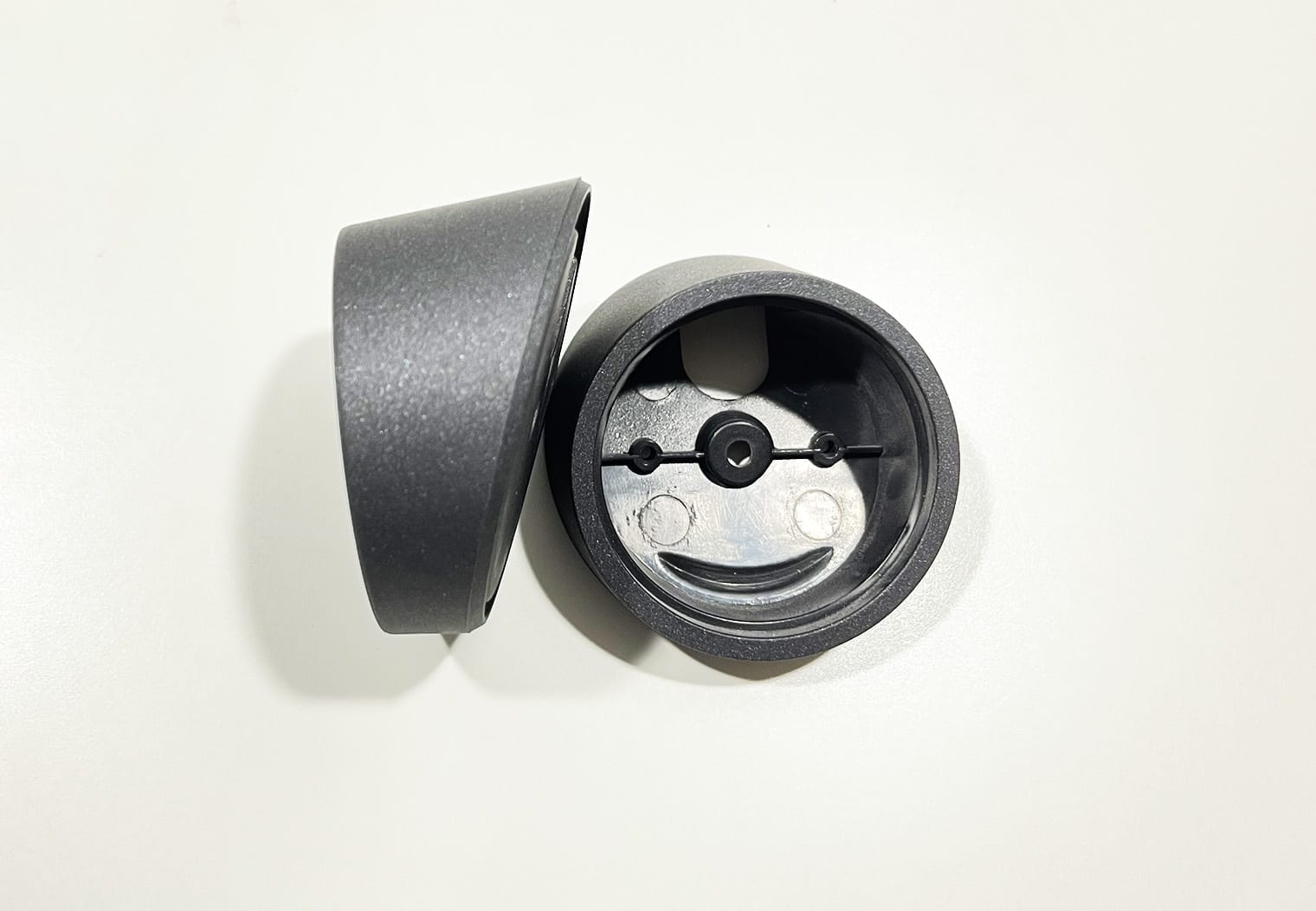
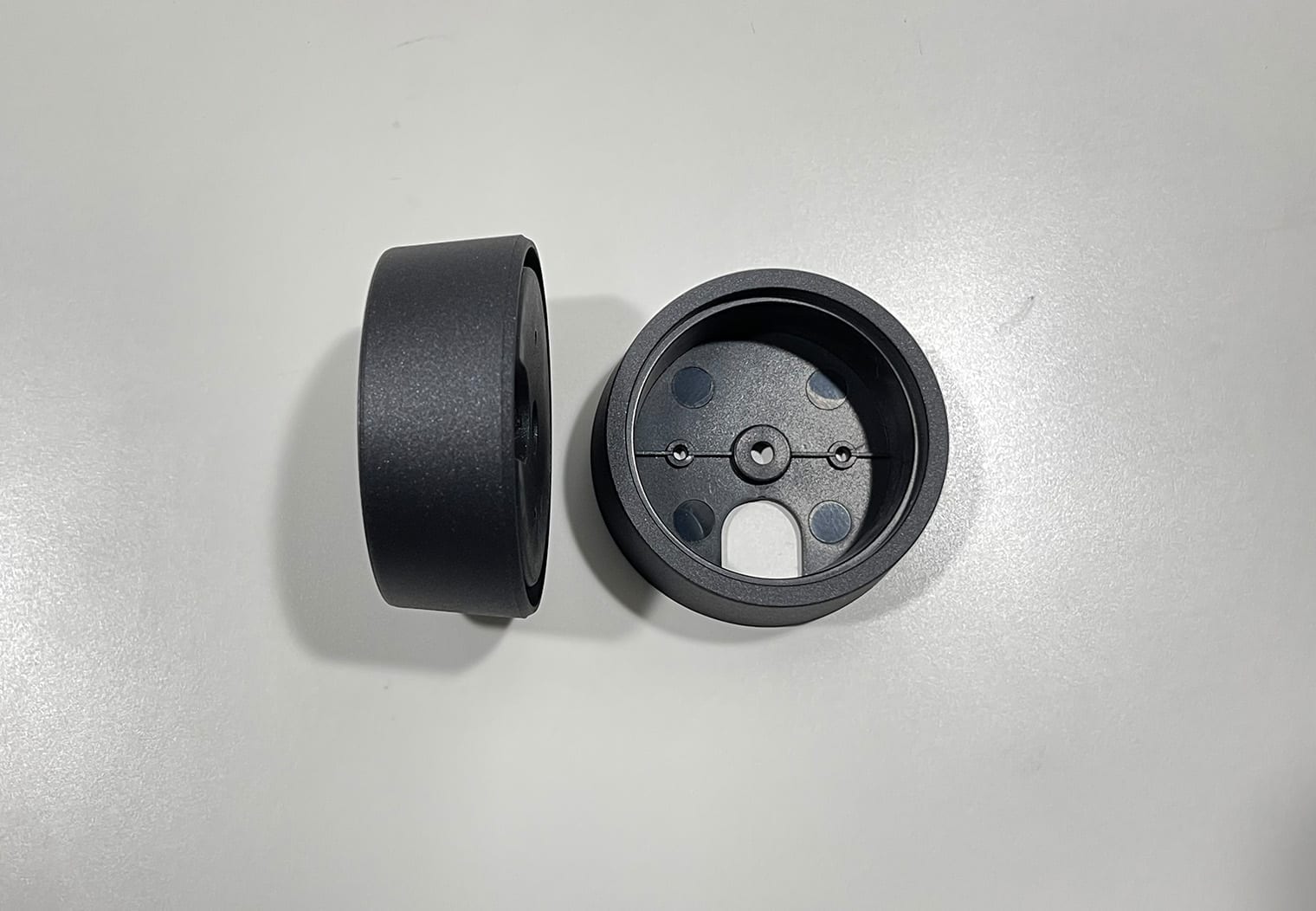
Right out of the box, you really get the sense that this lineup is a high-end product. The materials that they use for the cone, the basket and even the anodized aluminum bobbin all hint at how well the speakers might perform. We'll get more into the technology and materials shortly. But, in general they pass they eye and feel test with flying colors.
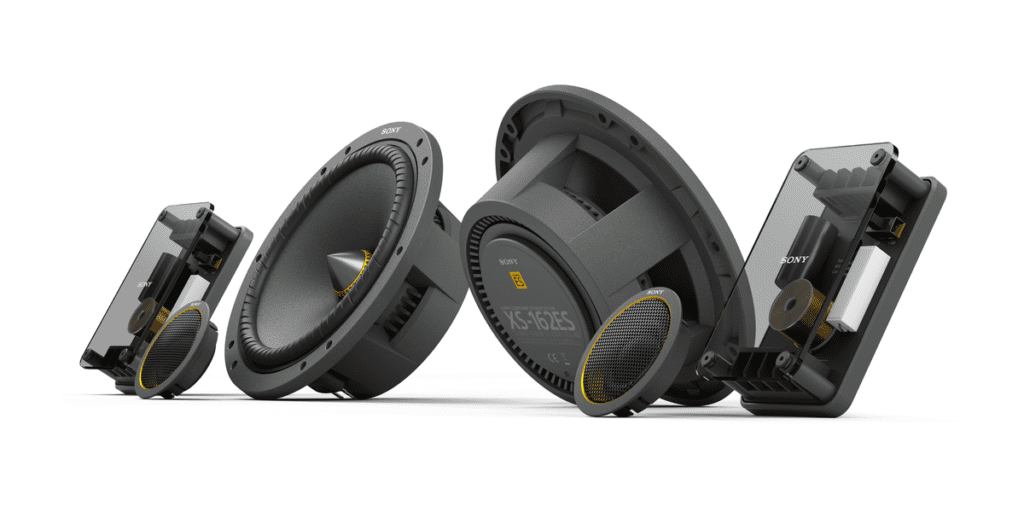
Mobile ES Speaker Sound Features
Sony's Mobile ES lineup is packed with a lot of cool features that I've rarely/never seen before. A lot of the features they've introduced with this line is proprietary and really innovative. The results is a really cool looking and well-performing set of speakers and subwoofer. A lot of these new features are pretty technical, and might require you to have a decent understanding of how a speaker works, but I'll try to translate some of these features into layman's terms. You can also read up on the anatomy of a car speaker if you want even more information about the components of a speaker.
Here are some of the most notable differentiating and proprietary features that the new line features. To start, here's a diagram of the speakers that'll help you align the feature to the speaker itself. Simply line up the numbered feature with the numbers in the diagram.
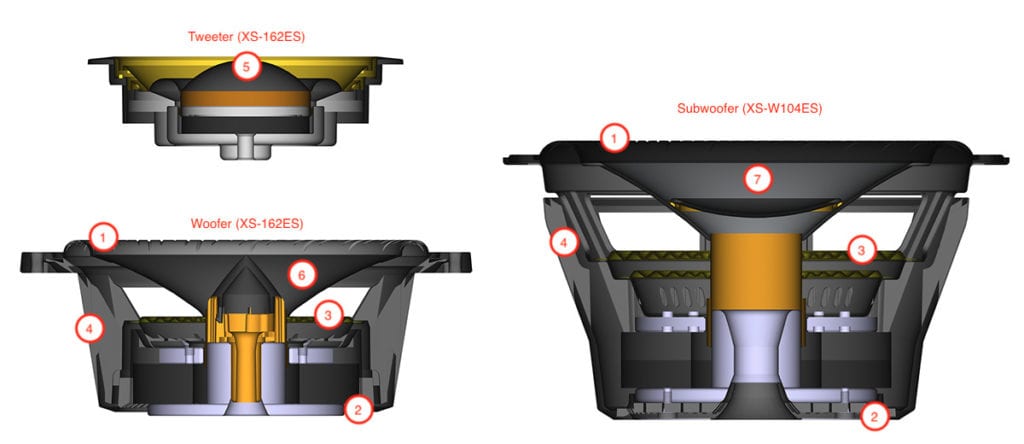
Common Features
Let's start out with common features that are shared between both the subwoofer and speakers. I'm combining them since they're the same technology, just on two different types of products.
#1 Separated Notch Edge
This was a feature that I actually haven't seen before. In all the speakers that I've seen, the surround is smooth. This is proprietary Sony technology. The way that I understand it, this technology makes the speaker move vertically with more precision and actually gives the cone a higher X-max. X-max (in layman's terms again) basically is how far the cone moves back and forth. The more it moves, the more air it pushes and the louder/lower it can reproduce frequencies.
In theory, this makes sense since these notches reduce the amount of material in the surround and probably reduce the amount of friction the speaker has to overcome as the cone moves. My only question would be related to reliability though since the material is thinner with the notches and the surrounds are typically the first thing to fail on a speaker. Especially in a dry climate or a speaker that's exposed to the elements outside. Only time will tell. It looks pretty cool too if you don't cover them up with the speaker grilles.
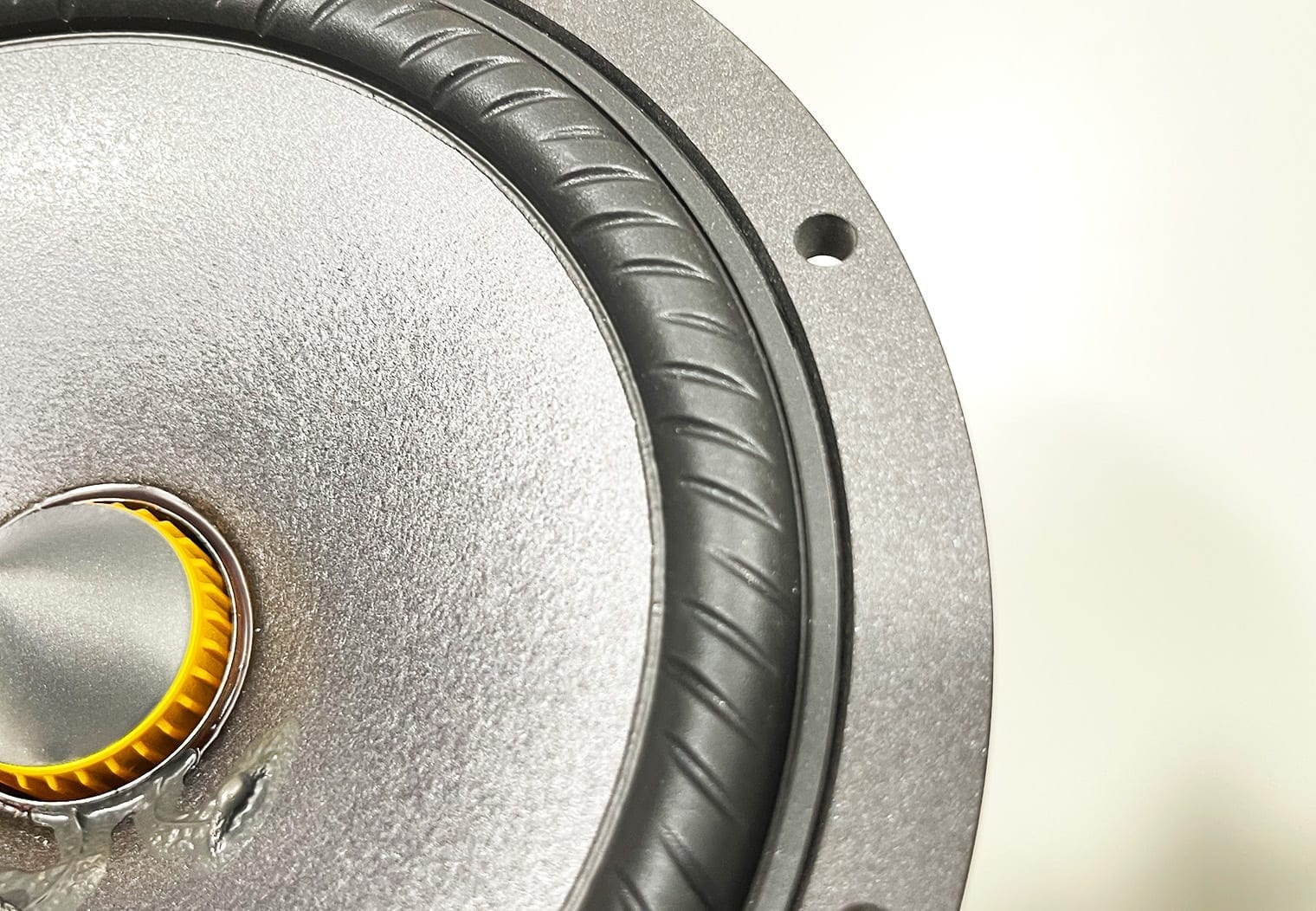
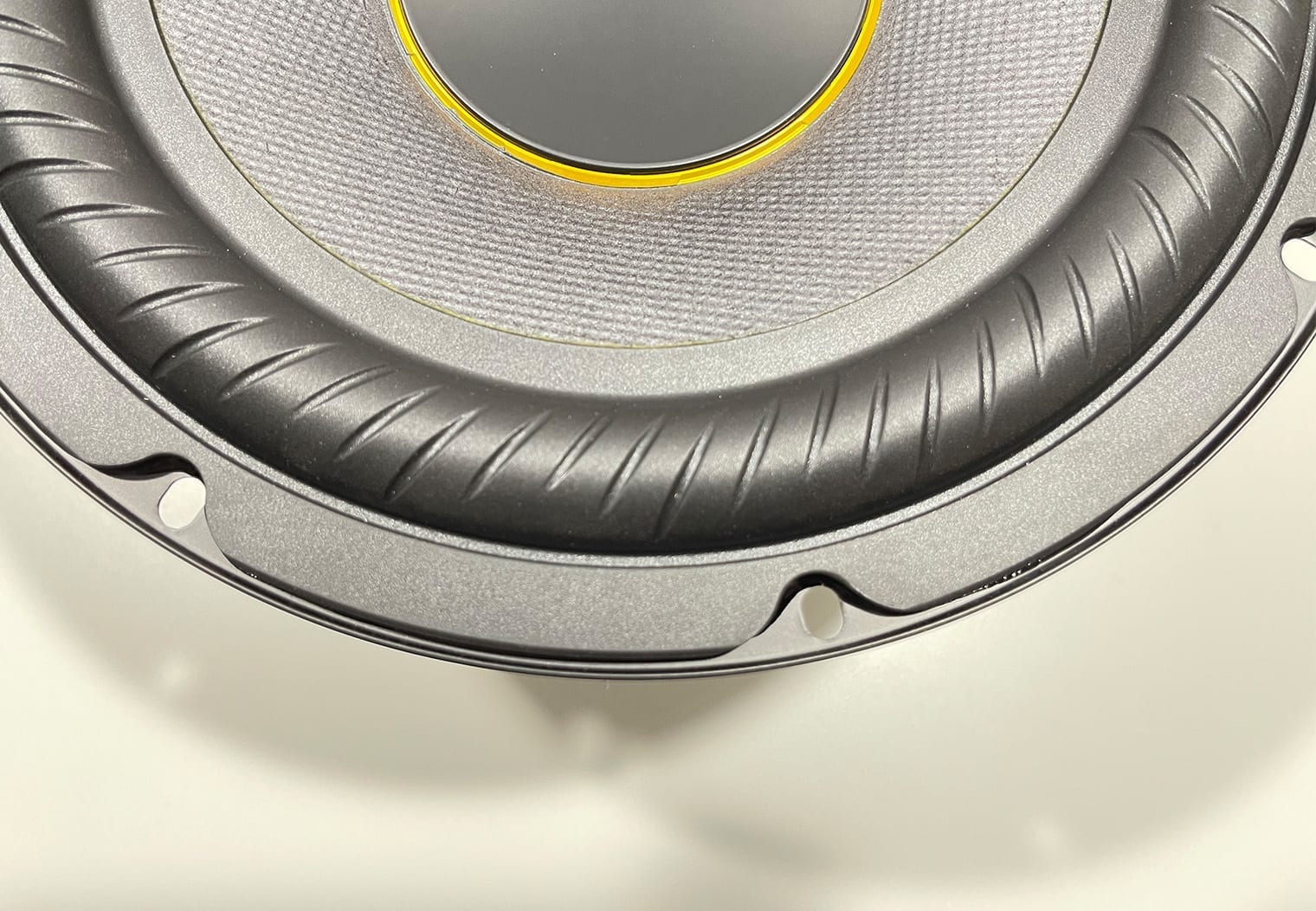
#2 Dynamic Air Diffuser
The dynamic air diffuser is basically vents that are integrated into the structure of the speaker and subwoofer baskets. These vents serve two purposes:
- Allows for air to pass more efficiently through the backside of the speaker. This helps reduce any buildup of air pressure that the structure behind the cone might create and makes the cone move more efficiently and with more precision.
- It cools the voice coil. Speakers don't have an overheating sensor that shut'll shut them off to prevent damage when it overheats like amplifiers do. So this design is built to help ensure the speaker operates within a safe range of temperature while under heavy load.
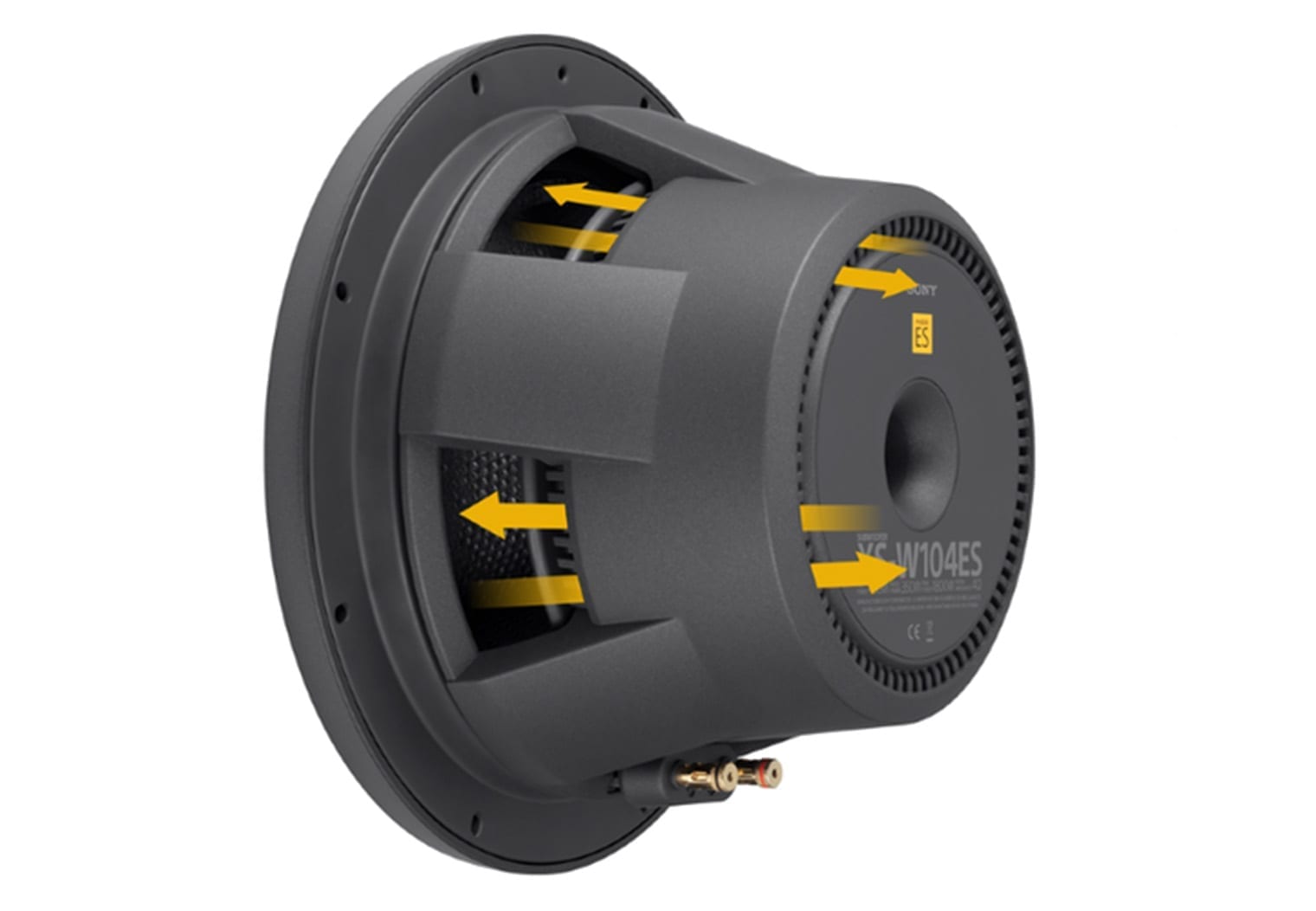
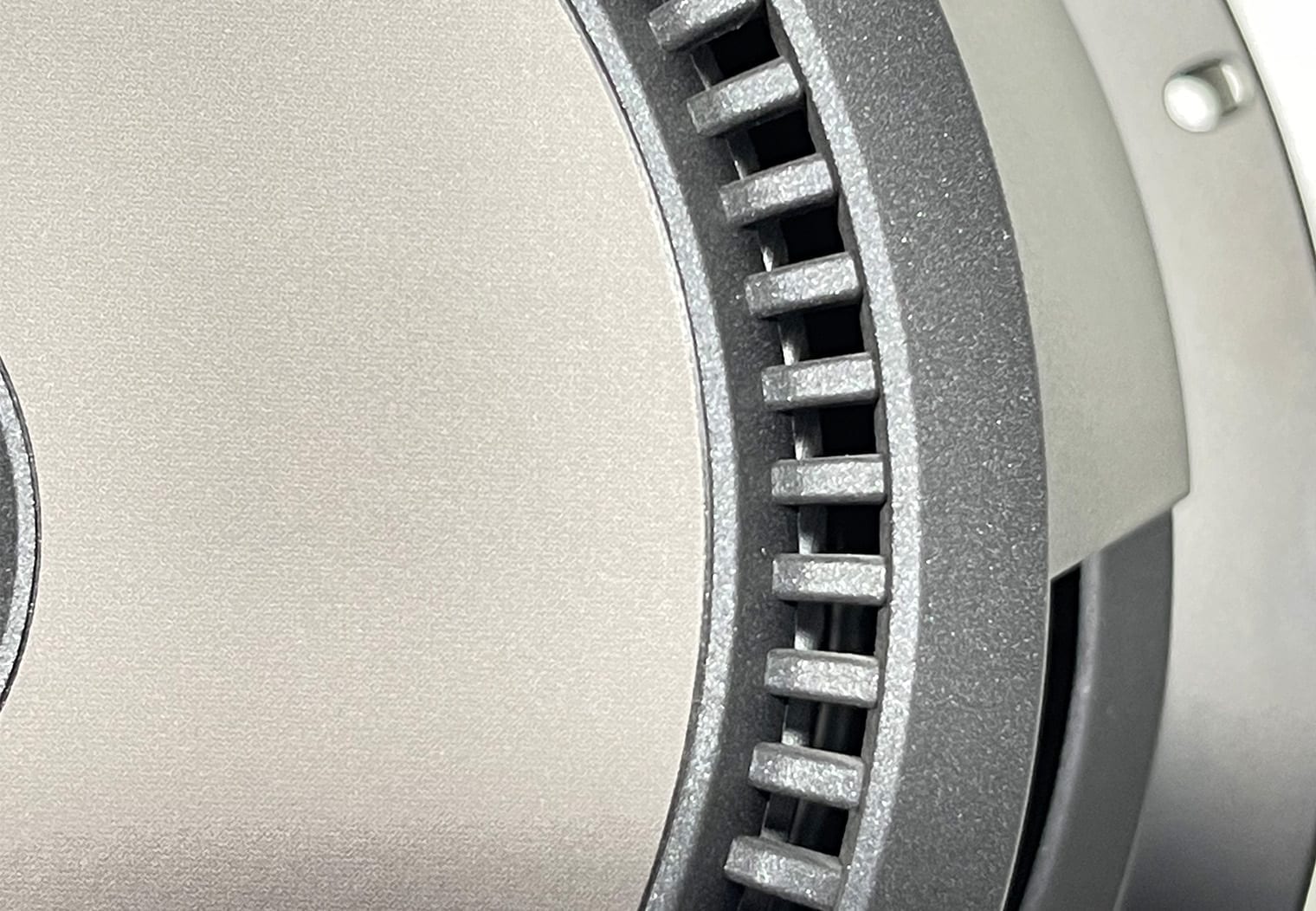
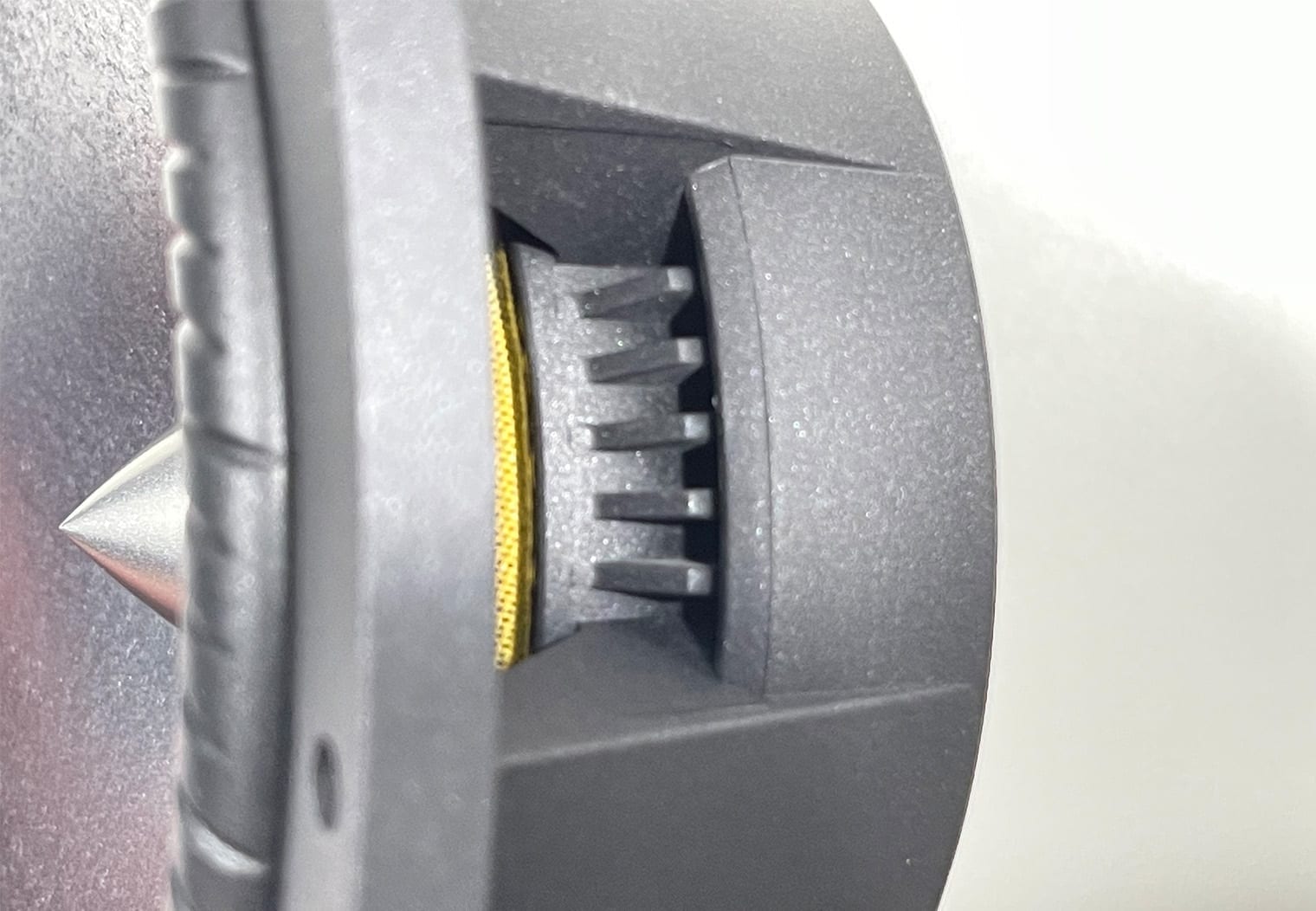
#3 Progressive Height Rate Spider
A spider is what prevents the inner part of the speaker, called the pole, from moving laterally and touching the magnet that moves the speaker's woofer. It needs to be rigid from left to right, but provide enough give vertically to allow the woofer to move and produce sound. Sony's progressive height rate spider was designed to allow the woofer to move with more precision and higher power without sacrificing any lateral movement.
The height, angle and shape of each wave can have a significant impact on the sound since it ultimately will affect the movement of the cone. Spyder's are also physically connected to the cone via the voice coil bobbin (in general). It really all comes down to the material that's used and the shape/design of it that'll differentiate one manufacturer's speaker from another. This is a feature that's hard to have an opinion on when you look at or hear a speaker but it's a critical component. But, I can tell you that Sony designs/optimizes each spider to each individual product. So the spider in their 6.5″ coaxials is slightly different than the one in their 6×9″ speakers. Many manufacturers use one spider across multiple products because it's cheaper and less time consuming. Sony's engineers use computer simulation to tweak the spiders for each product and then further refine via hearing tests.
So even though you might not be able to see the difference or an untrained ear can't hear the difference, the spiders really do play a large role in the overall quality of the sound. The fact that Sony spends the time and money to individually optimize the spider for each product is just another example of how this lineup is different than many of the speakers on the market today, even other high-end speakers.
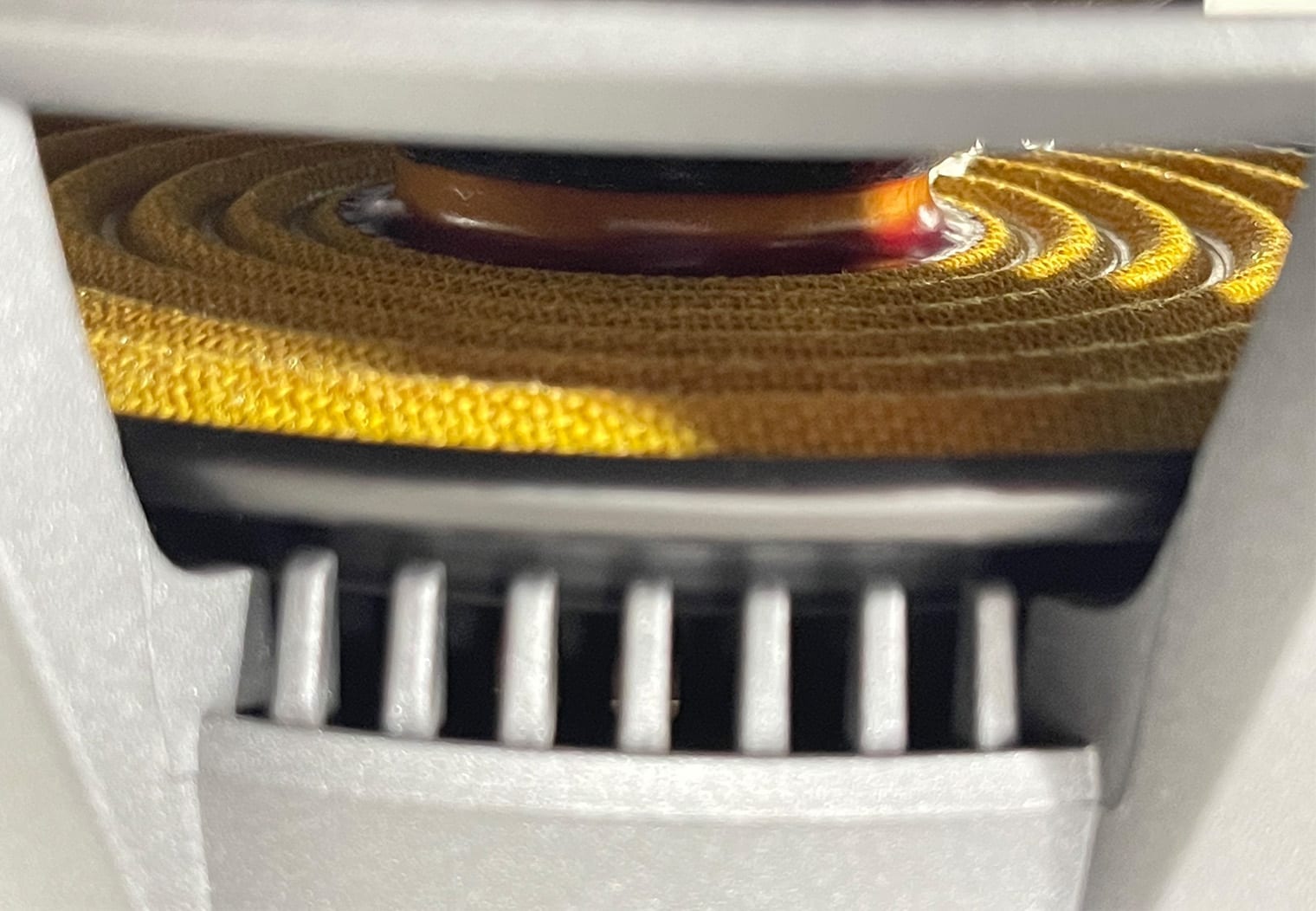
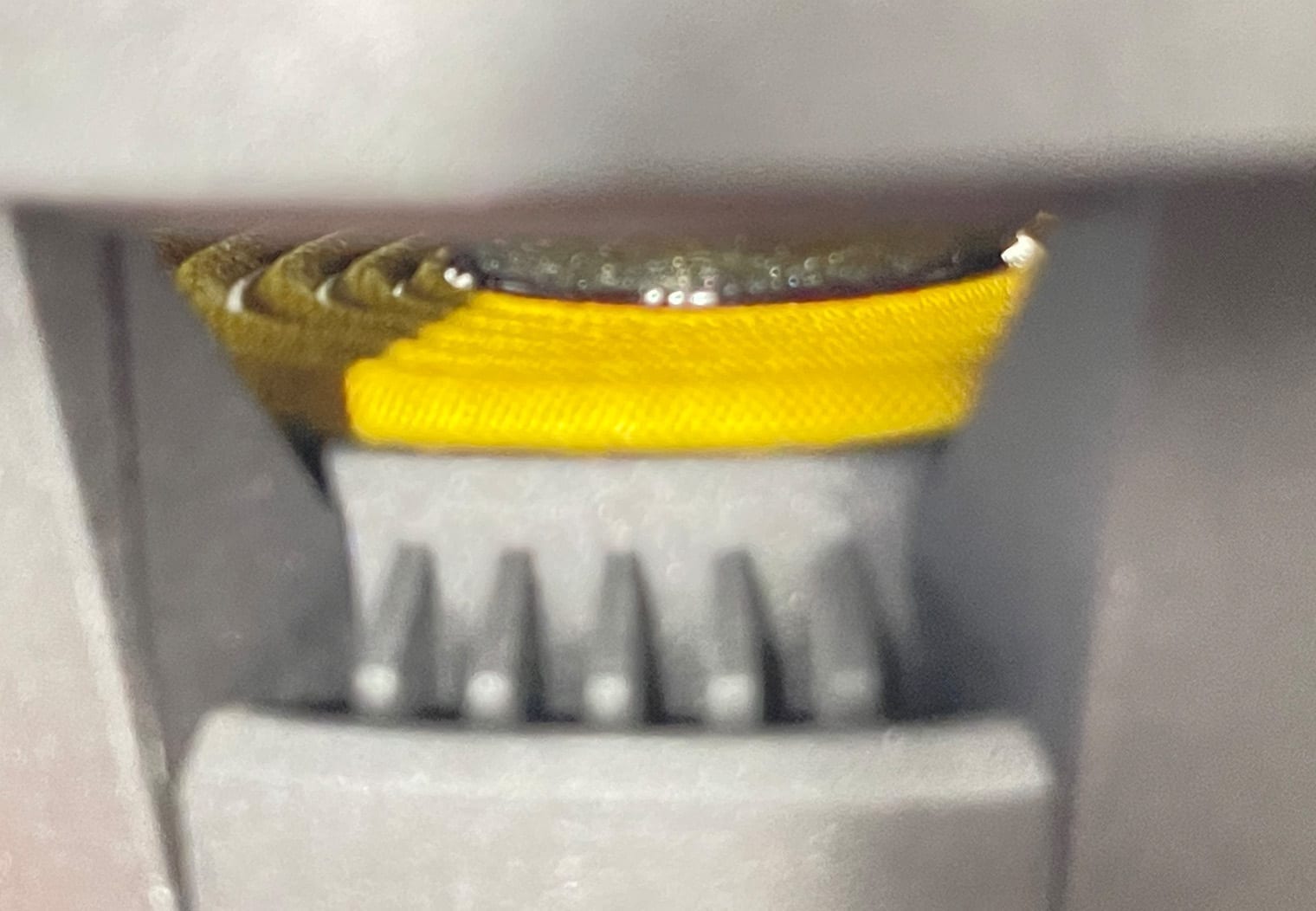
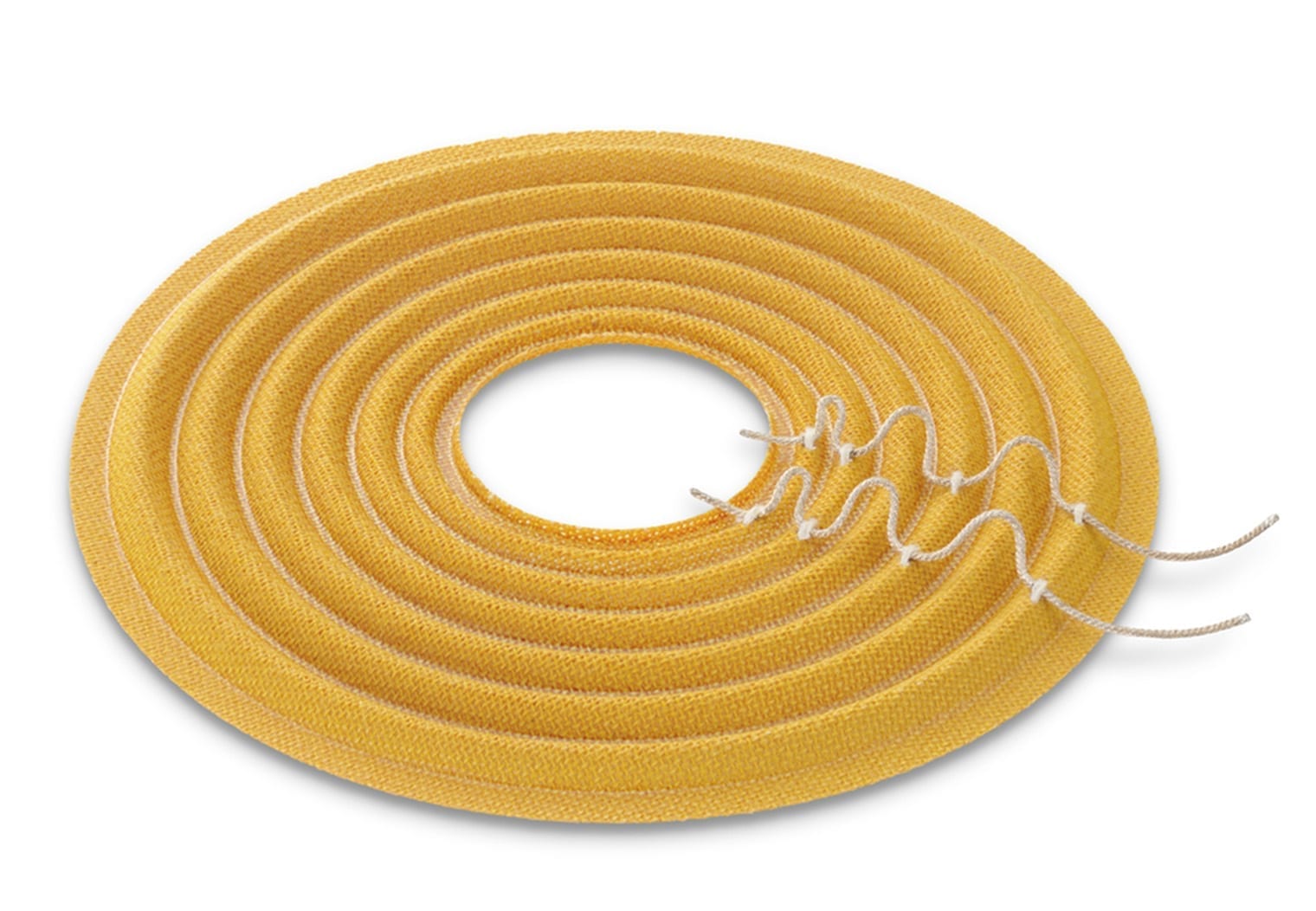
#4 Five-beam Structure
The structure of the speaker's basket is really the frame of the speaker. Like a car's frame, it prevents it from twisting, vibrating, failing, and otherwise not performing well while under load from the motor. Four-beam structures are really common in the speaker world, but five-beam – not as much. The five-beam frame design provides both rigidity but also limits the amount of unwanted resonance that comes along with a frame that might otherwise flex, vibrate or alter the speaker's ability to operate with precision sound.
When I was inspecting these speakers, I really liked the design. A lot of speakers are all shot in the front and ugly on the back. But this frame design really makes the speaker look great from front to back!
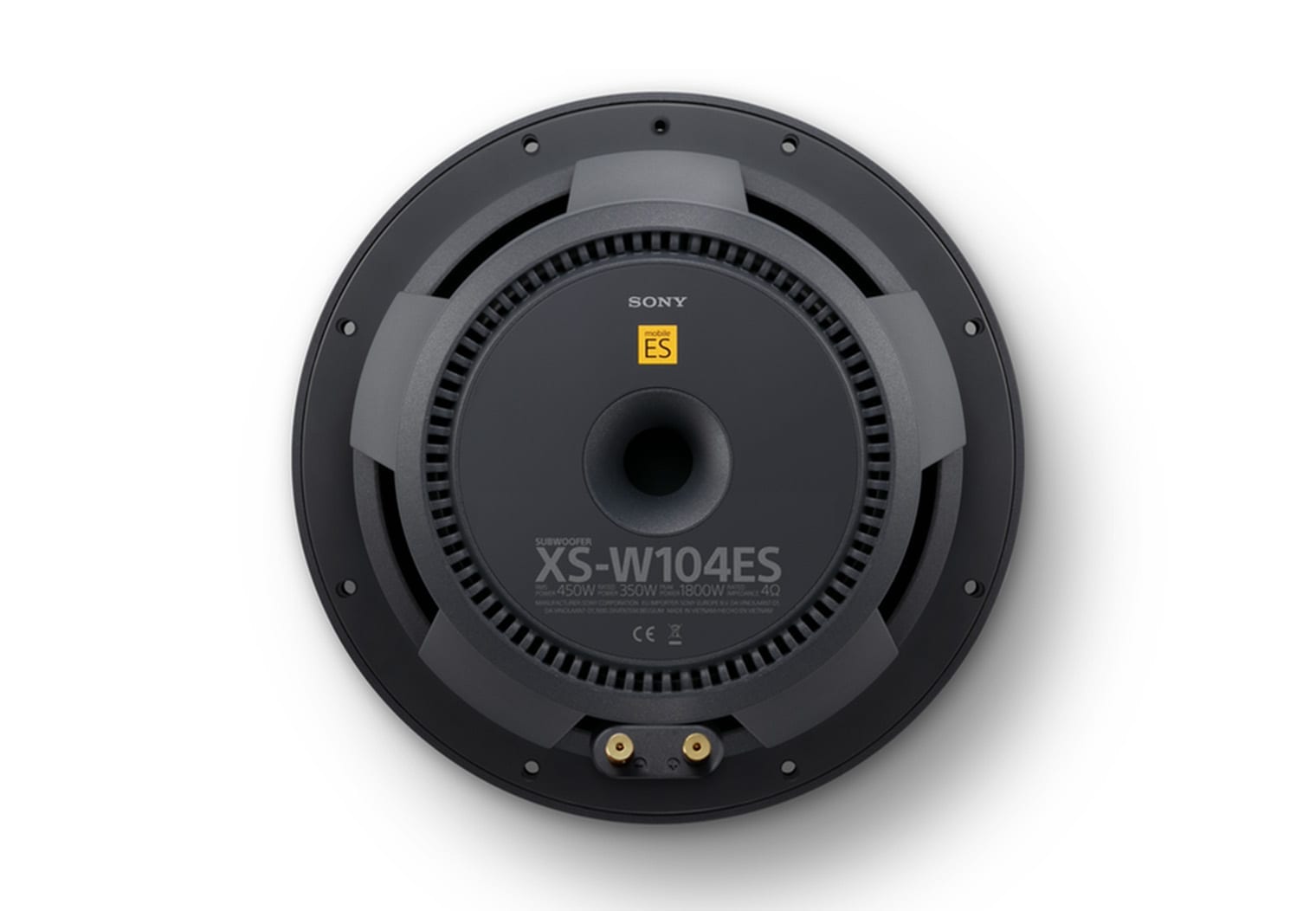
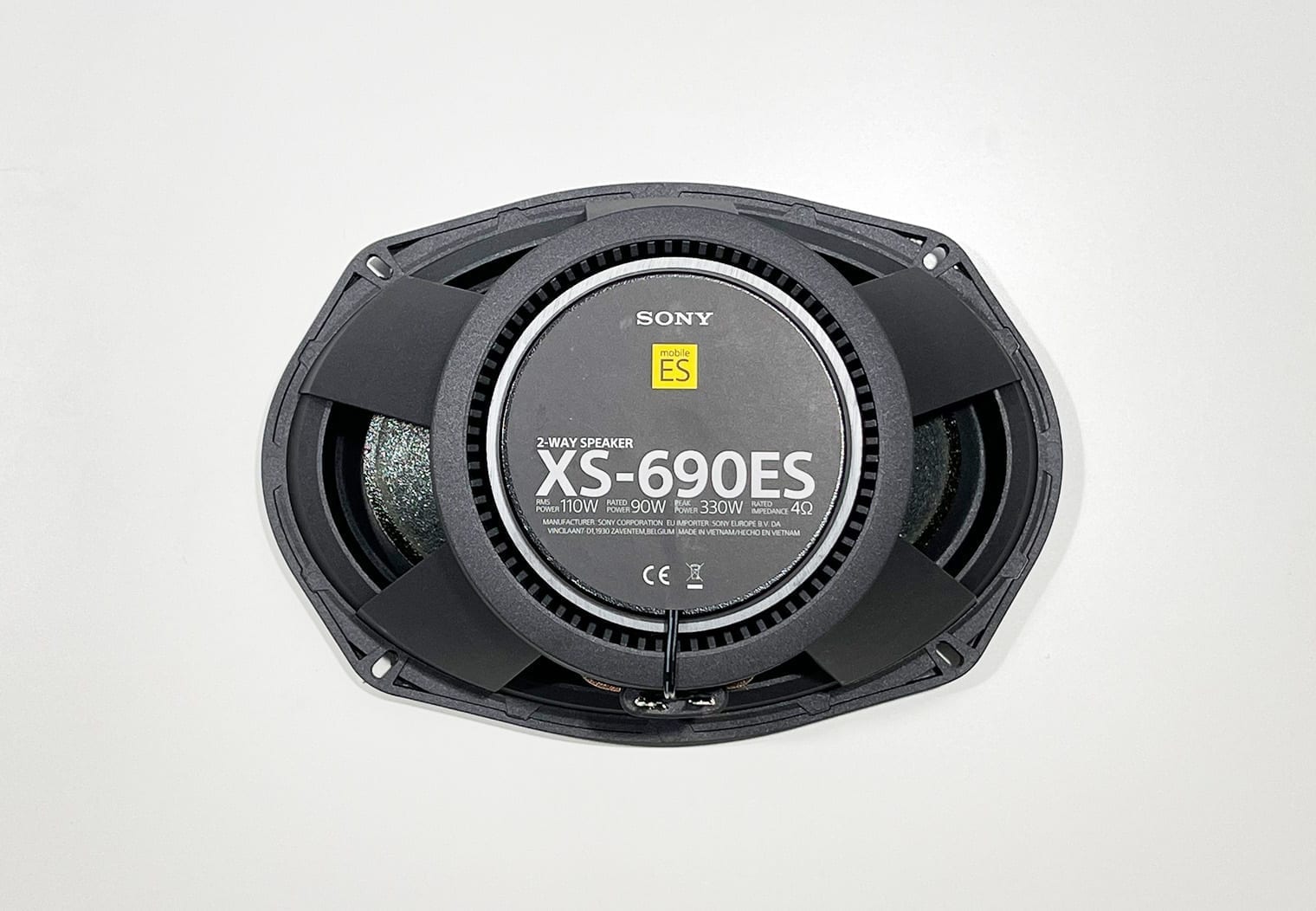
Speaker-Unique Features
These are features that come specifically on the speakers and not on the subwoofers.
#5 Synthetic Fabric Soft Dome Tweeter
Tweeters come with two types of domes for the most part: soft and hard. A hard dome tweeter is typically made from aluminum or titanium and has a much ‘harder' sounding high frequencies. In some cases, titanium and aluminum domes can even be harsh in certain applications but they tend to carry further distances and pump higher volumes because the dome is incredibly rigid.
Soft dome tweeters are… softer in how they sound. They're traditionally not as harsh as a hard dome tweeter and better for indoor, close proximity music (like your car). Sony uses a synthetic fabric to the tweeter dome, but isn't much more specific than that. Soft dome tweeters would definitely be my personal preference for a vehicle tweeter.
Depending on whether you purchase one of the of the component speakers, the tweeters will either come fixed to the center of the speaker (coaxial) or completely separate (component). You can read up more about coaxials vs components if you'd like.
The coaxial speakers come with two different sized tweeters, depending on the model you purchase:
- The XS-162ES and XS-690E come with a 1″ tweeter diaphragm.
- The XS-160ES and XS-680ES come with a 13/16″ tweeter diaphragm.
If you don't cover the coaxial speakers with the grille, I would be cautious about anything that may snag or otherwise puncture the synthetic fabric. It's designed to be light and accurate but might be susceptible to damage if you don't cover them with the provided grilles.
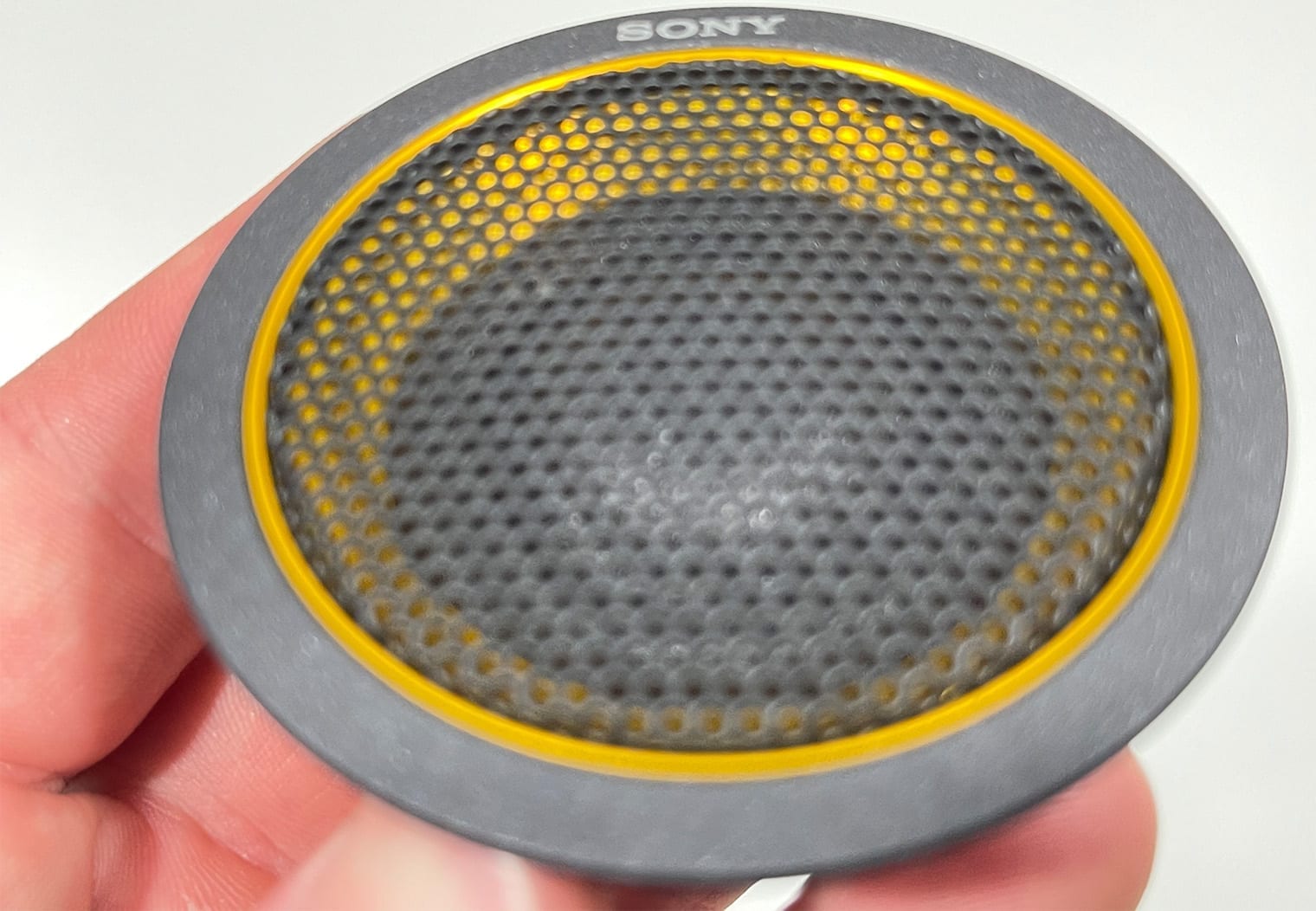
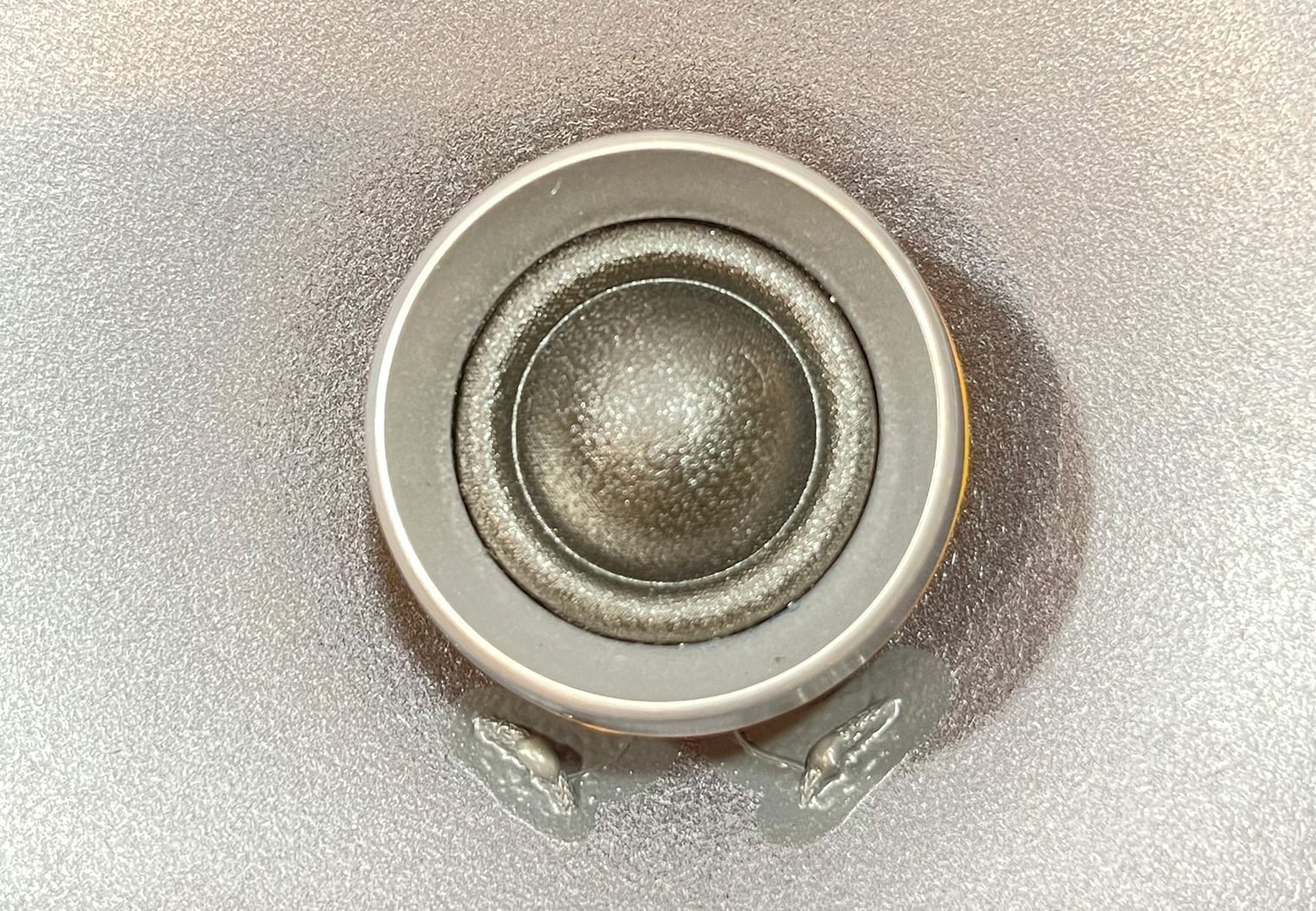
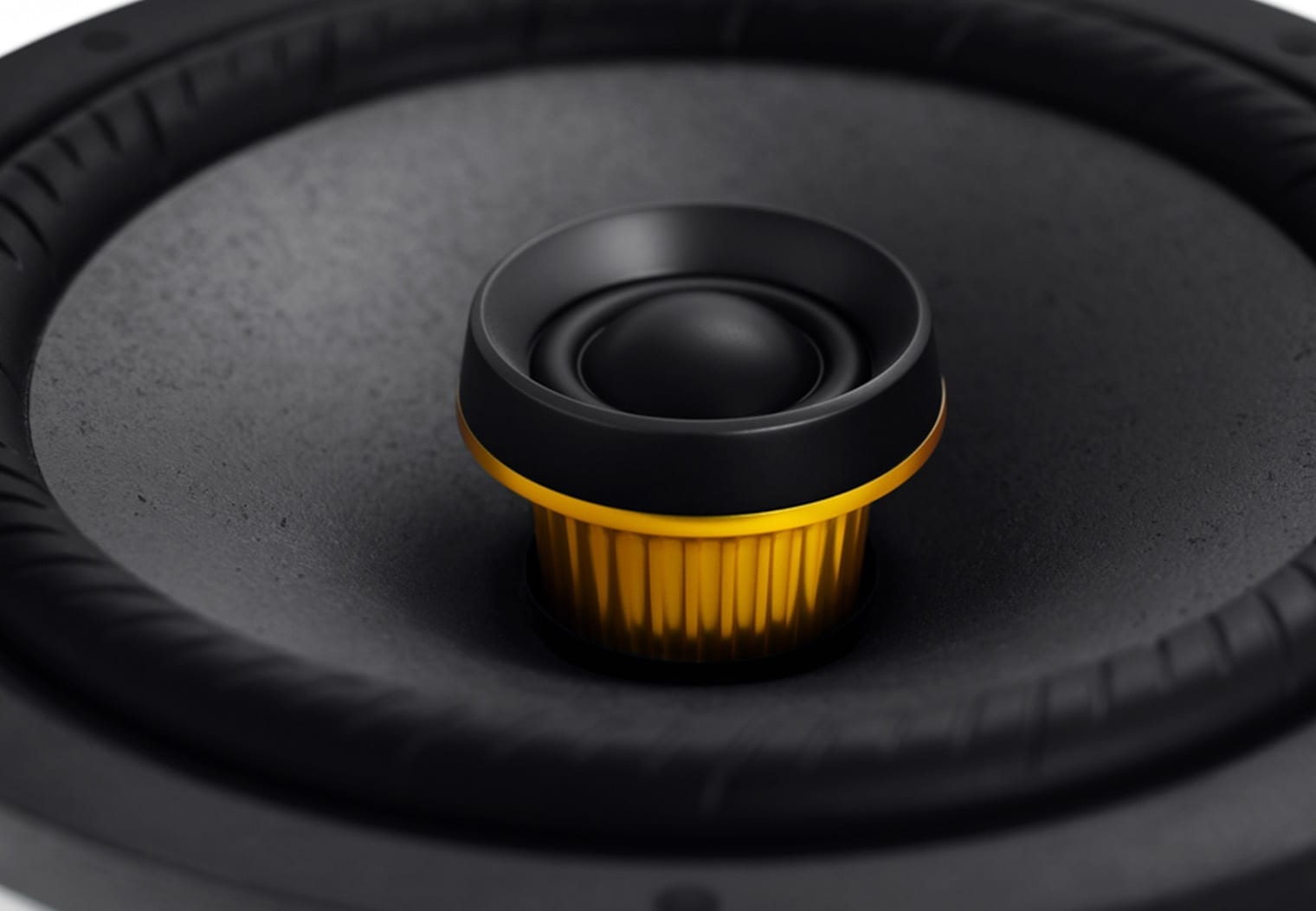
#6 MRC Diaphragm Material
The speaker woofer/cone material is made from what's called Mica Reinforced Cellular (MRC) material. Every mainstream manufacturer really has their own proprietary blend of materials that they engineer and heavily test. Crutchfield has a good glossary of materials, in which it describes Mica as “a group of minerals composed from various amounts of aluminum, potassium and other metals.” When you look at the cone on the ES series speakers, this description of Mica really makes sense. It looks like a metallic pressed cone.
Generally speaking, manufacturers are constantly seeking ways to improve the weight and rigidity of their woofer materials. They can do that by using different methods of construction (woven vs pressed vs honeycomb pressed) or with different blends of the woofer's materials. What's worth noting here is that this is a blend of Mica that's unique to Sony, so they put the time and effort ($$) into R&D to develop their own material for these speakers. I can confidently say that this material is superior to conventional materials like polypropylene alone and since they designed it you know they thoroughly tested its performance as well. It also looks amazing and high-end.
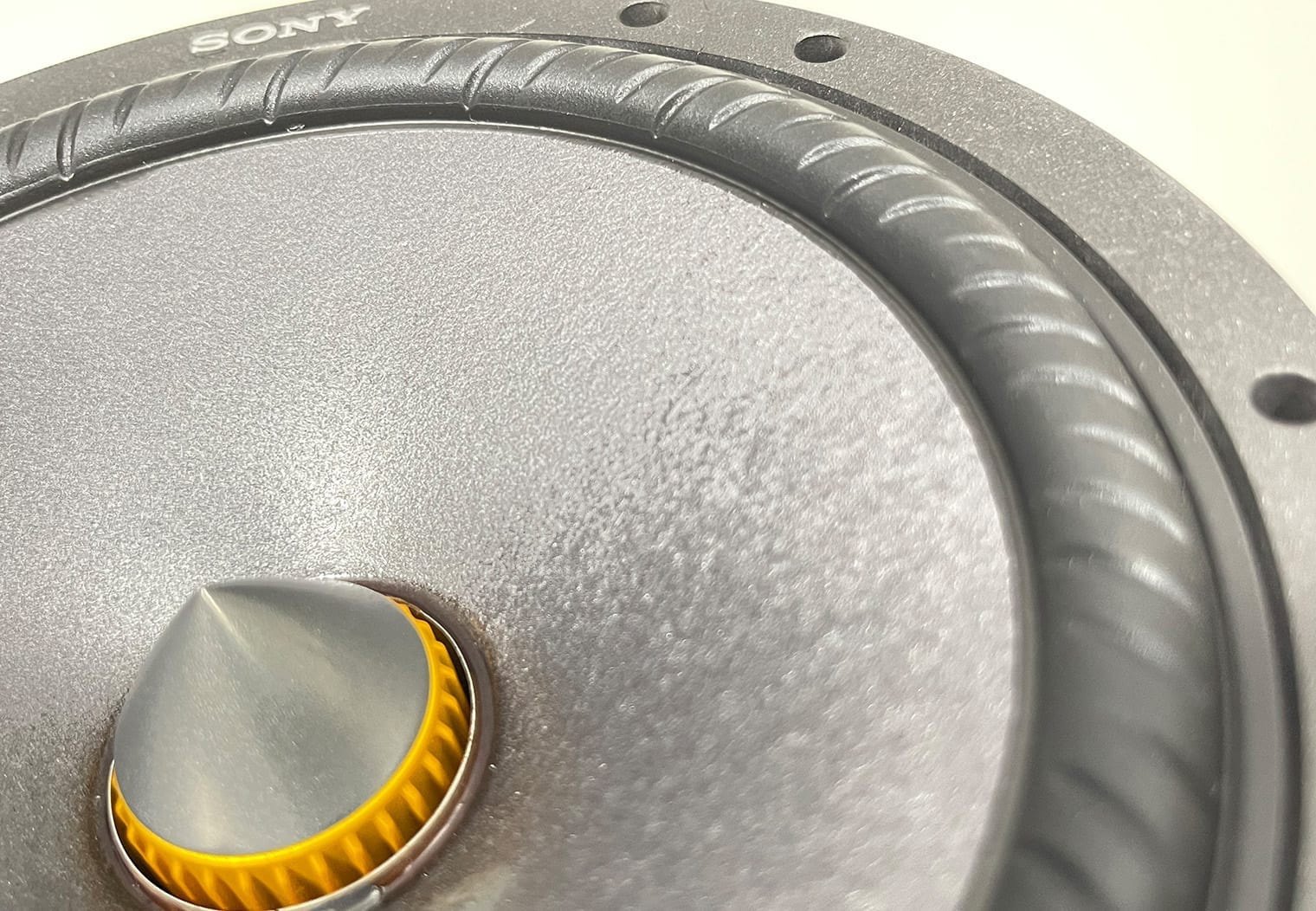
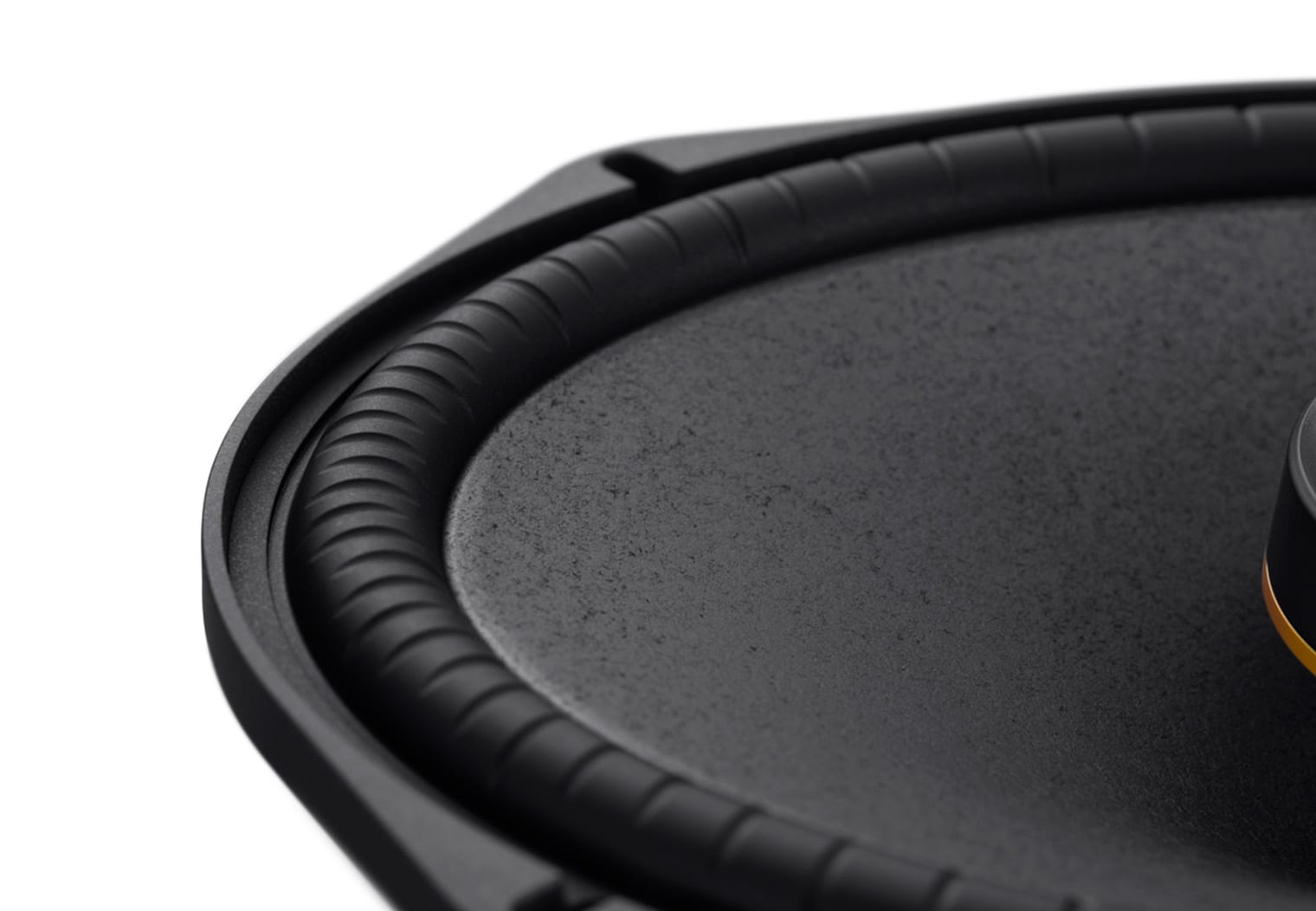
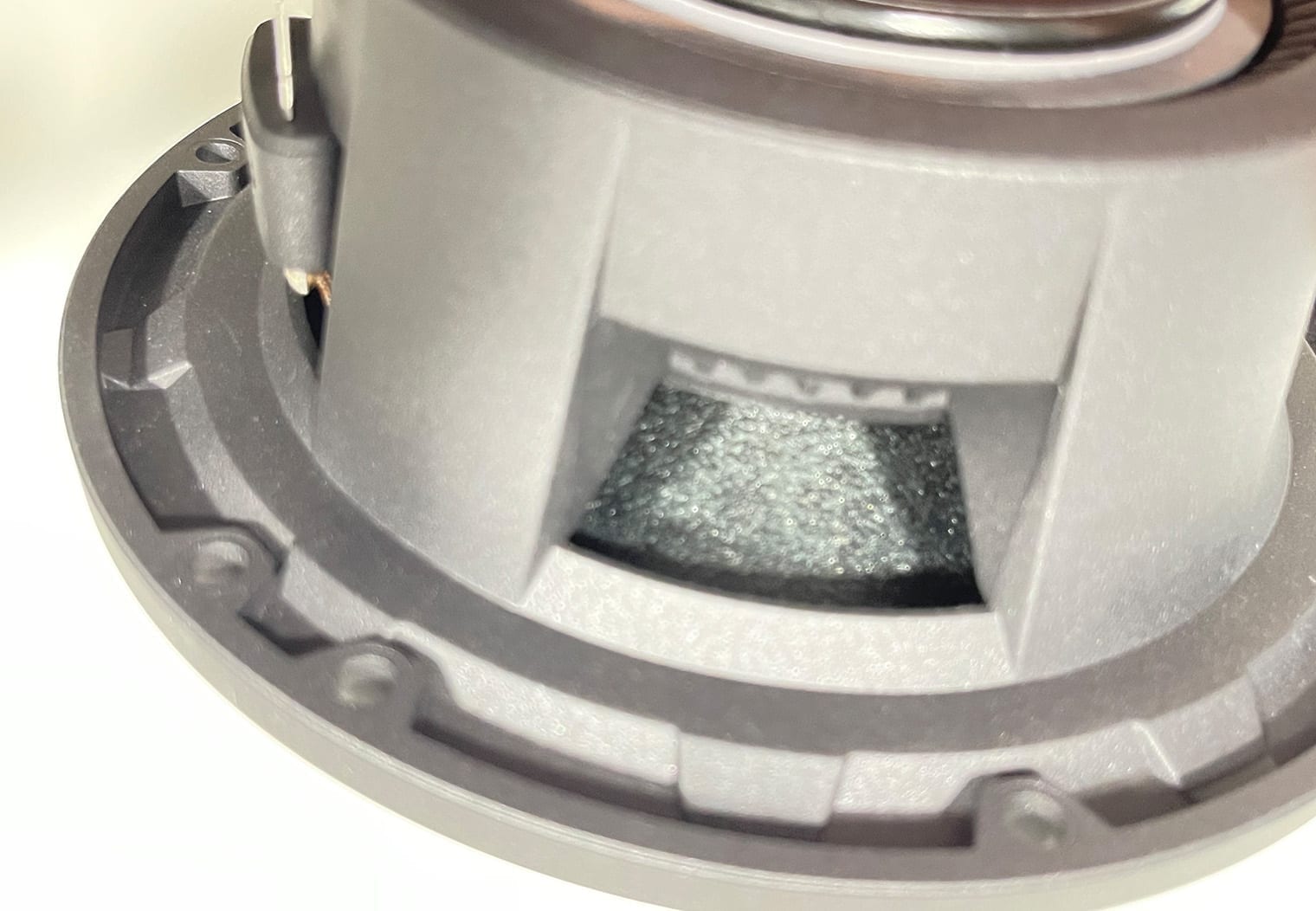
Bi-amp Terminal Crossovers with Gain Selectors (XS-162ES Crossover Only)
This feature is specific to the XS-162ES component speakers and isn't represented in our diagram above. This is because this feature exists on the separate crossovers that come along with the component speaker set.
A Bi-amp terminal basically allows you to power these speakers with two separate amplifiers or two separate channels from an amplifier. Bi-amping is done in high-performance stereos to try to be as precise with the frequencies that the amplifier is sending to the speaker's crossover as possible.
This bi-amp feature is really for in-depth tuning. Typical DIY stereo installers aren't going to leverage it. But if you do decide to use this type of setup, you'll likely need a gain selector in the crossover to adjust the output of the tweeter signal to keep it in balance with the woofer. This is what Sony also features in their crossovers. In some cases, you might not even need bi-amping to use this selector.
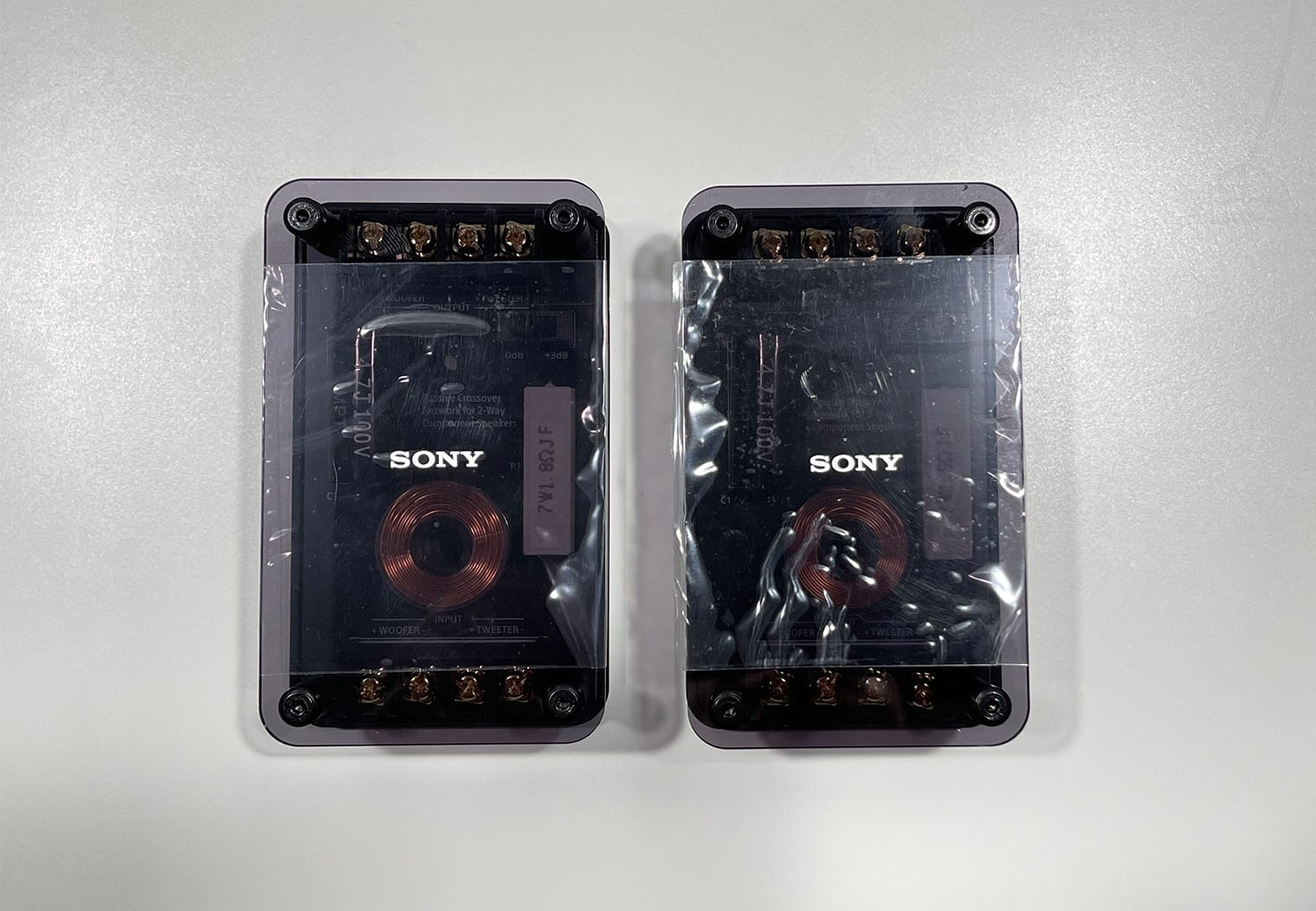
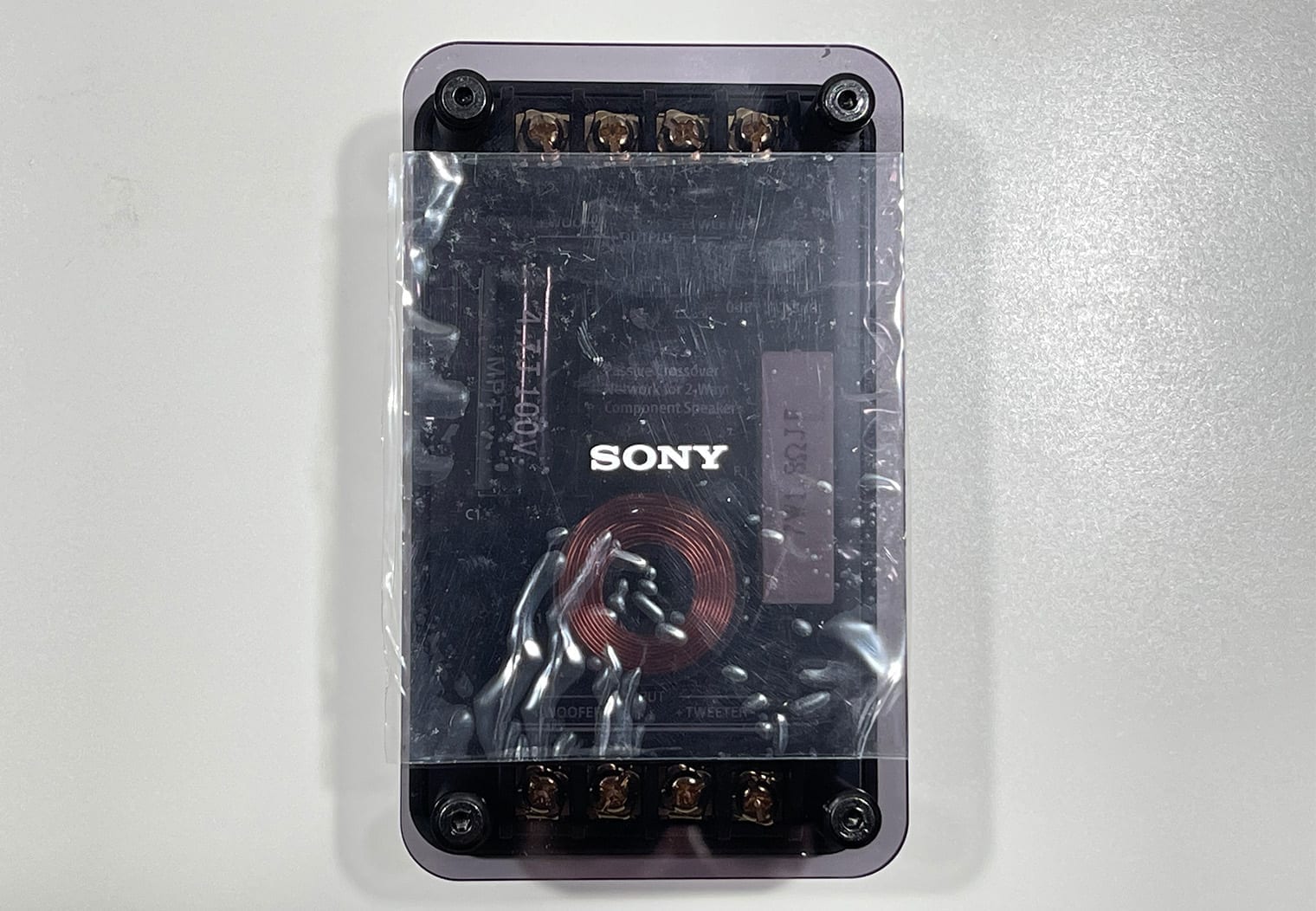
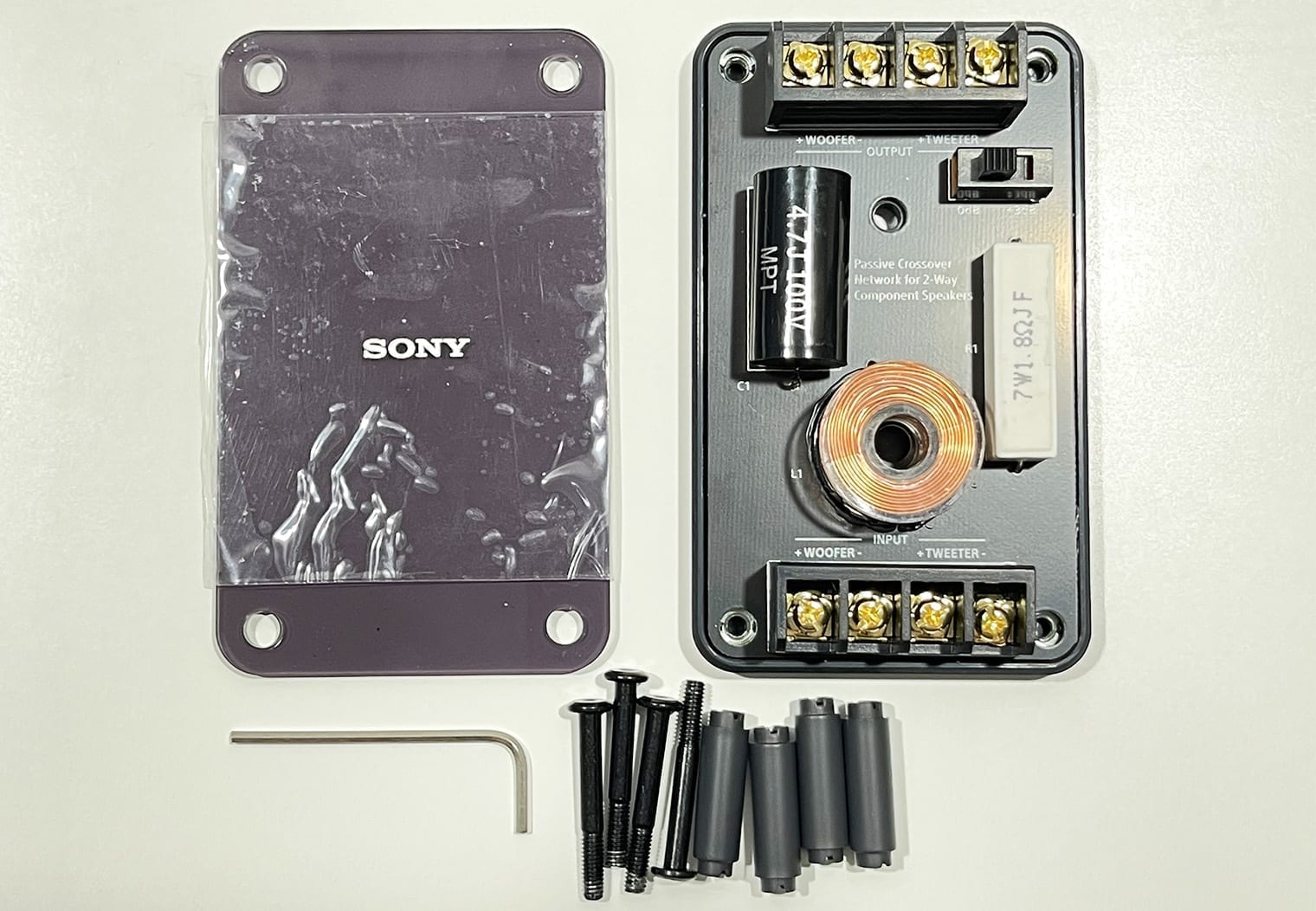
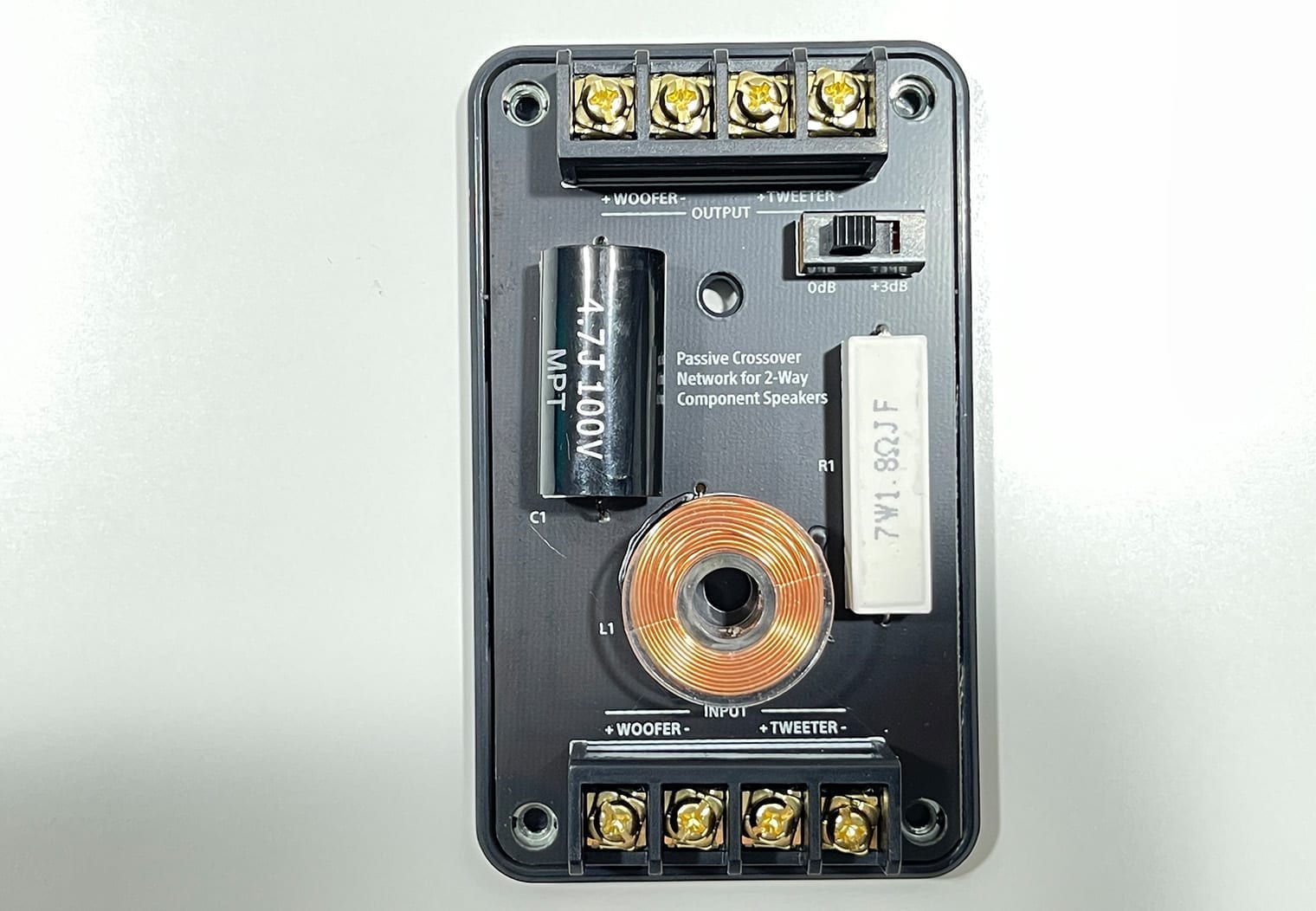
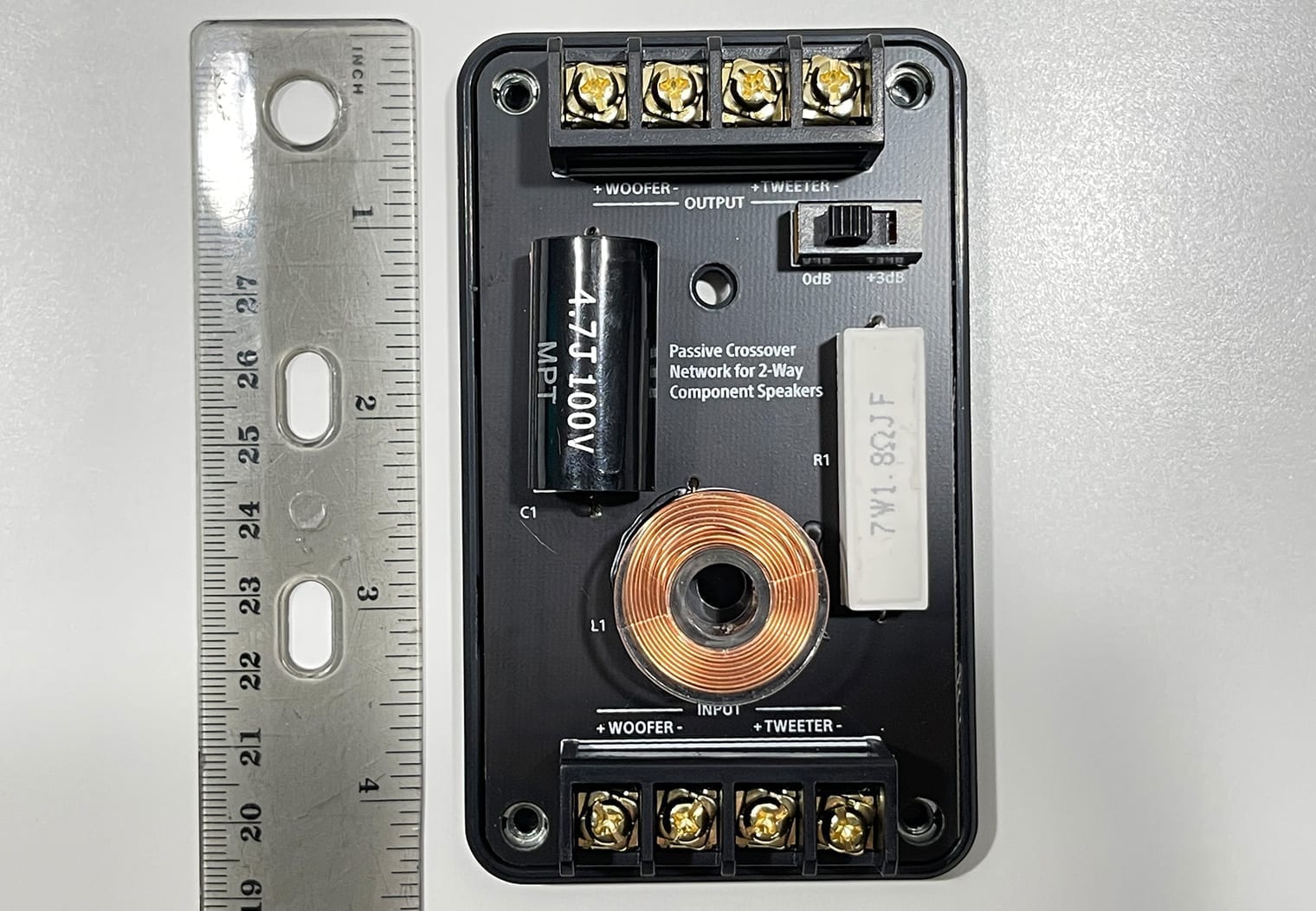
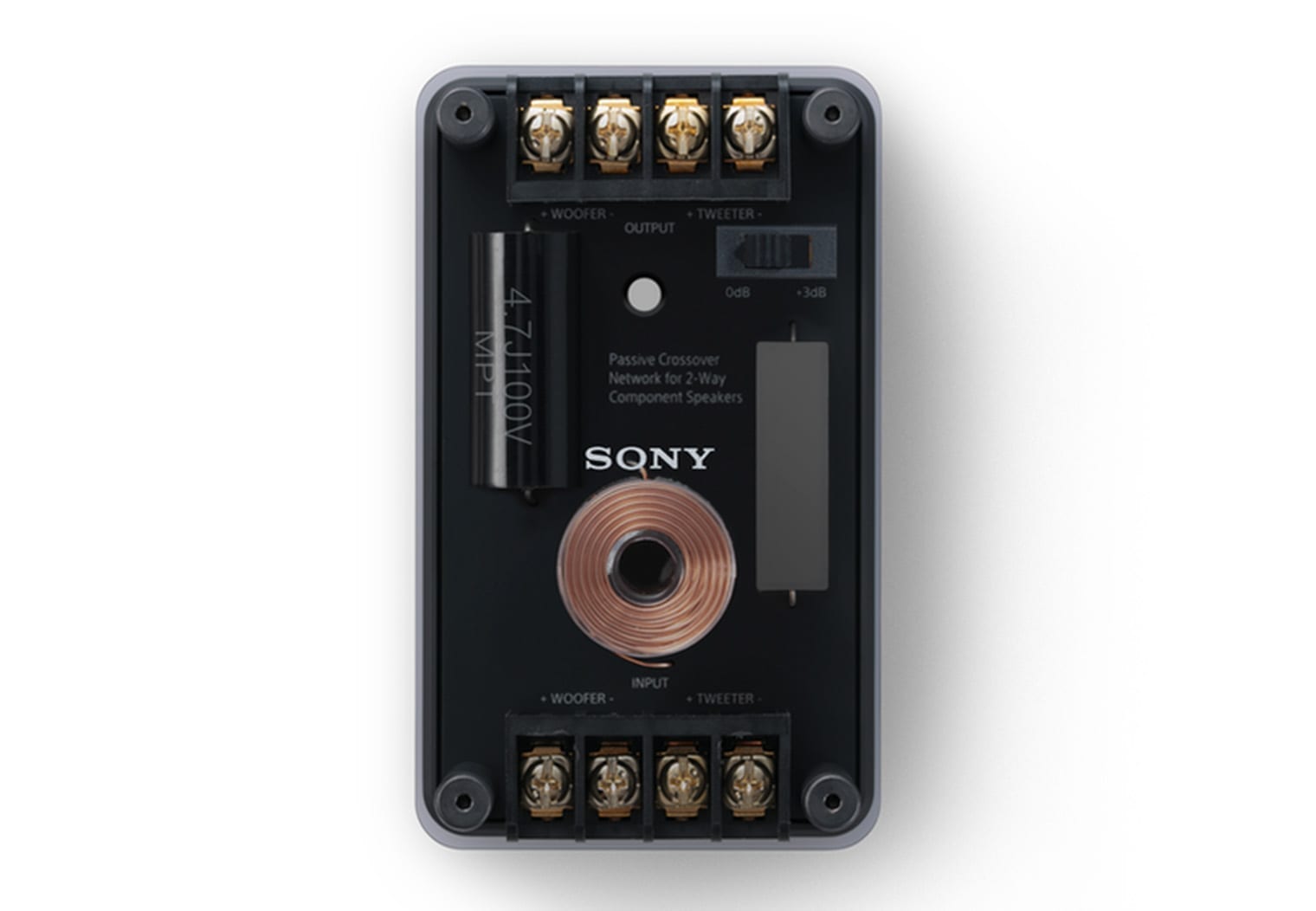
Couple things worth noting about the transparent cover over the top of the crossover. One, it doesn't seal the crossover internals up which makes it a little prone to dirt, dust and moisture. Not that you plan on mounting these in an area that gets wet or dirty, but a fully covered crossover might bet better suited for elements other than in a sealed compartment or door panel. And two, just note that you're likely going to have to take these transparent covers off to access the terminals. You can use an angled screw driver, but you really can't get access to the terminal screws without pulling the transparent cover off. Removing the cover requires an allen wrench to remove four screws that hold the top cover on.
Subwoofer Features
These features are unique to the subwoofer and aren't found on the speakers
#7 MRC Honeycomb
The MRC material on Sony's Mobile ES subwoofers is a little different than that of the MRC material on its speakers. For more detail about the material itself, scroll up to #6. The biggest difference is the thickness and the way that the material is pressed. Sony uses a lot more material for the subwoofer's cone, and it's pressed in a honeycomb-like fashion. You can see it pretty easily closeup. Sony claims that this material produces a driver that's “10x more rigid than conventional PP Matrix cones”. Rigidity is crucial for preventing distortion at high volumes. 10x the rigidity is a pretty big claim so this must be a good material.
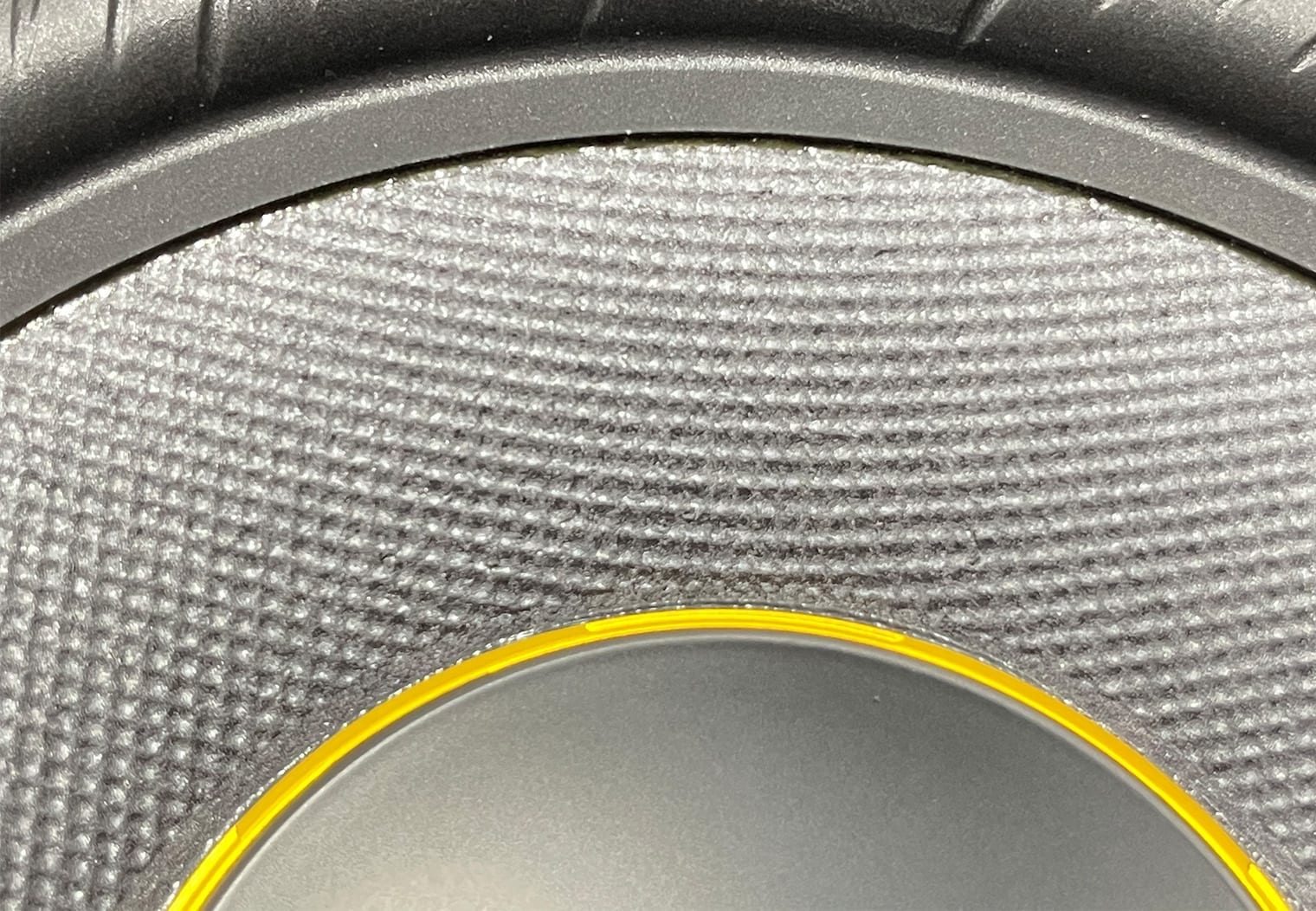
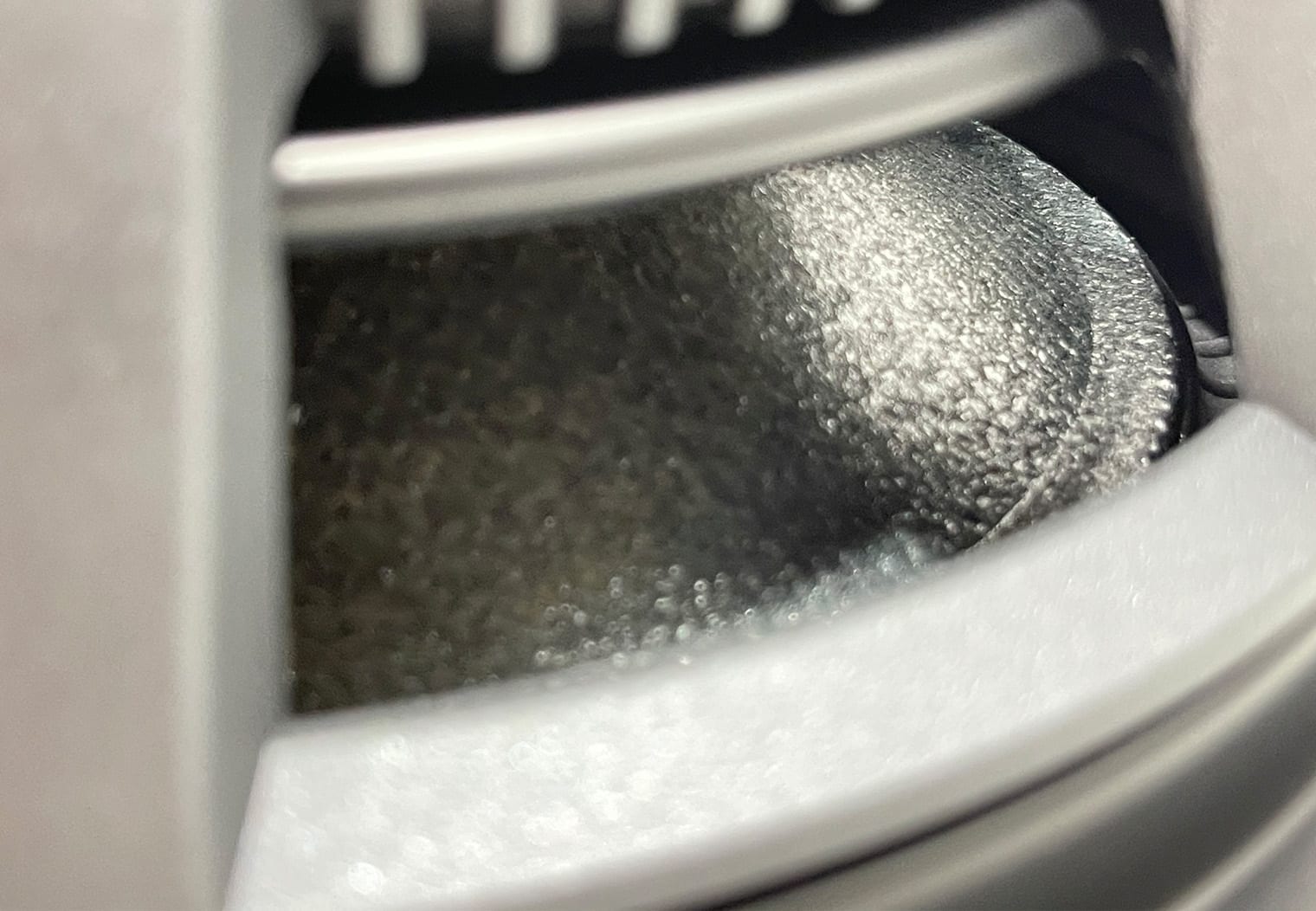
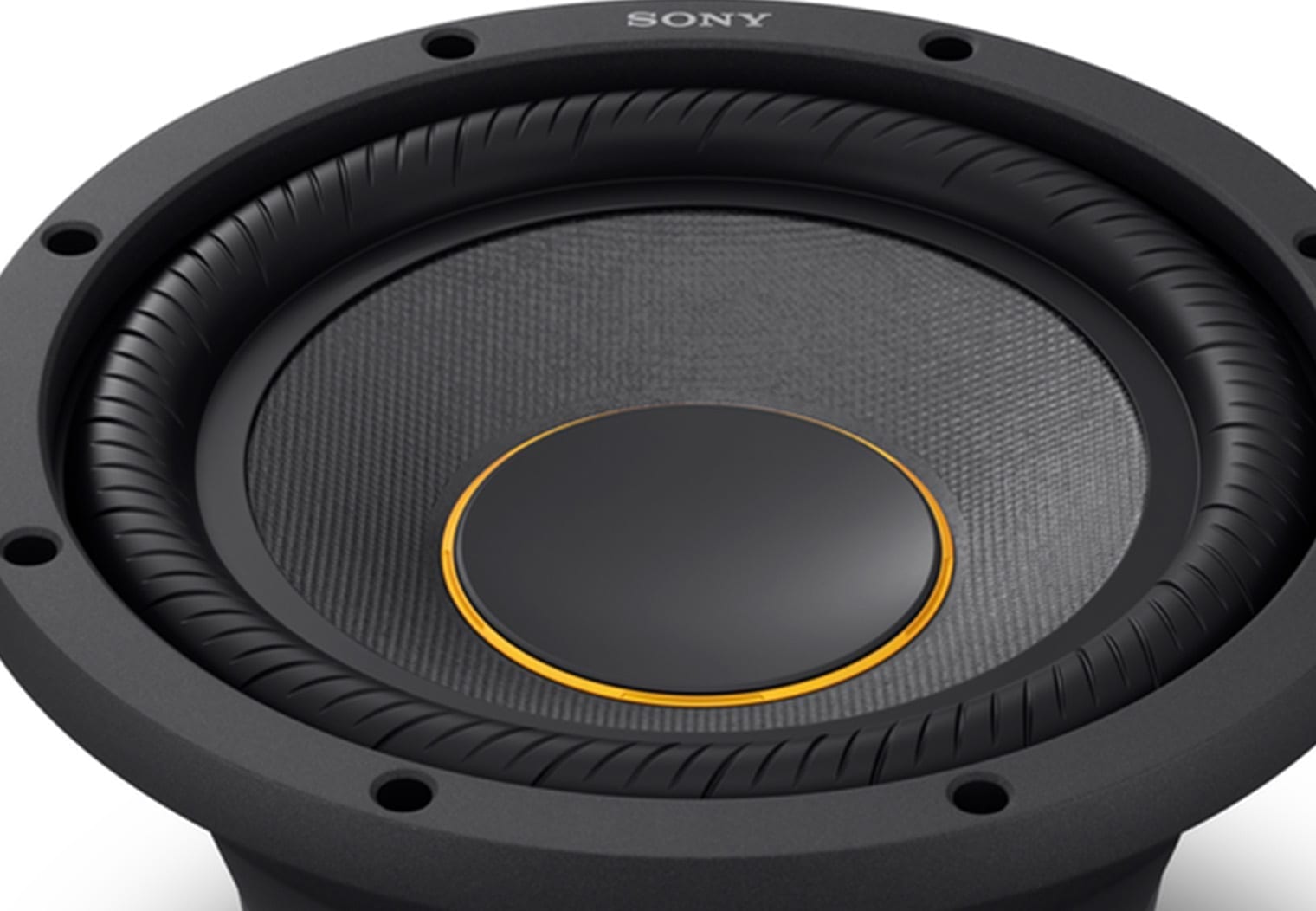
Mobile ES Speaker/Subwoofer Specs
Here's a quick high-level table with all of the key specs for the Mobile ES products:
| XS-160ES | XS-162ES | XS-680ES | XS-690ES | XS-W104ES | |
|---|---|---|---|---|---|
| Size/Type | 6.5" coaxial | 6.5" component | 6x8" coaxial | 6x9" coaxial | 10" Sub |
| RMS Power (Watts) | 90W | 90W | 75W | 110W | 450W |
| Peak Power (Watts) | 270W | 270W | 240W | 330W | 1,800W |
| Impedance (Ohms) | 4 | 4 | 4 | 4 | 4 |
| Frequency Range (Hz) | 45 - 40k Hz | 40 - 40k Hz | 40 - 40k Hz | 35 - 40k Hz | 28 - 500 Hz |
| Output Sound Pressure (SPL) | 89 dB ±2 dB SPL (1 W, 1 m) | 89 dB ±2 dB SPL (1 W, 1 m) | 89 dB ±2 dB SPL (1 W, 1 m) | 90 dB ±2 dB SPL (1 W, 1 m) | 86 dB ±2 dB SPL (1 W, 1 m) |
Final Thoughts
Right out of the box, Sony's Mobile ES speakers look and feel high end. The gunmetal gray with gold accents make for a stylish looking speaker. Combined with the MRC cones, these are among the better looking lineup of speakers I've seen to date. I wouldn't even cover them with a grille.
There's a ton of innovative features on these speakers too that really make them stand out from other speakers that I'm excited to put to the test when I hook them up and install them. From the separated notch edge and progressive height rate spider to the synthetic fabric soft dome tweeter – the only real way to see how much of a difference these features make is to listen to them but after opening and inspecting these speakers I'm confident I won't be disappointed.
I do like the full lineup of speaker sizes too. You'll likely be able to make a system for any car you want with this lineup. They're really reasonably priced too – once available they will all retail for under $300. The only thing I would have liked to see is a 12″ subwoofer in the lineup. Maybe that will come later.
All in all, very impressed with the first look at this lineup and can't wait to build a system in the near future. Stay tuned for that install!

Hi do you have the full list of t.s parameters for the Sony mobile es 3 way set? Thanks in advance